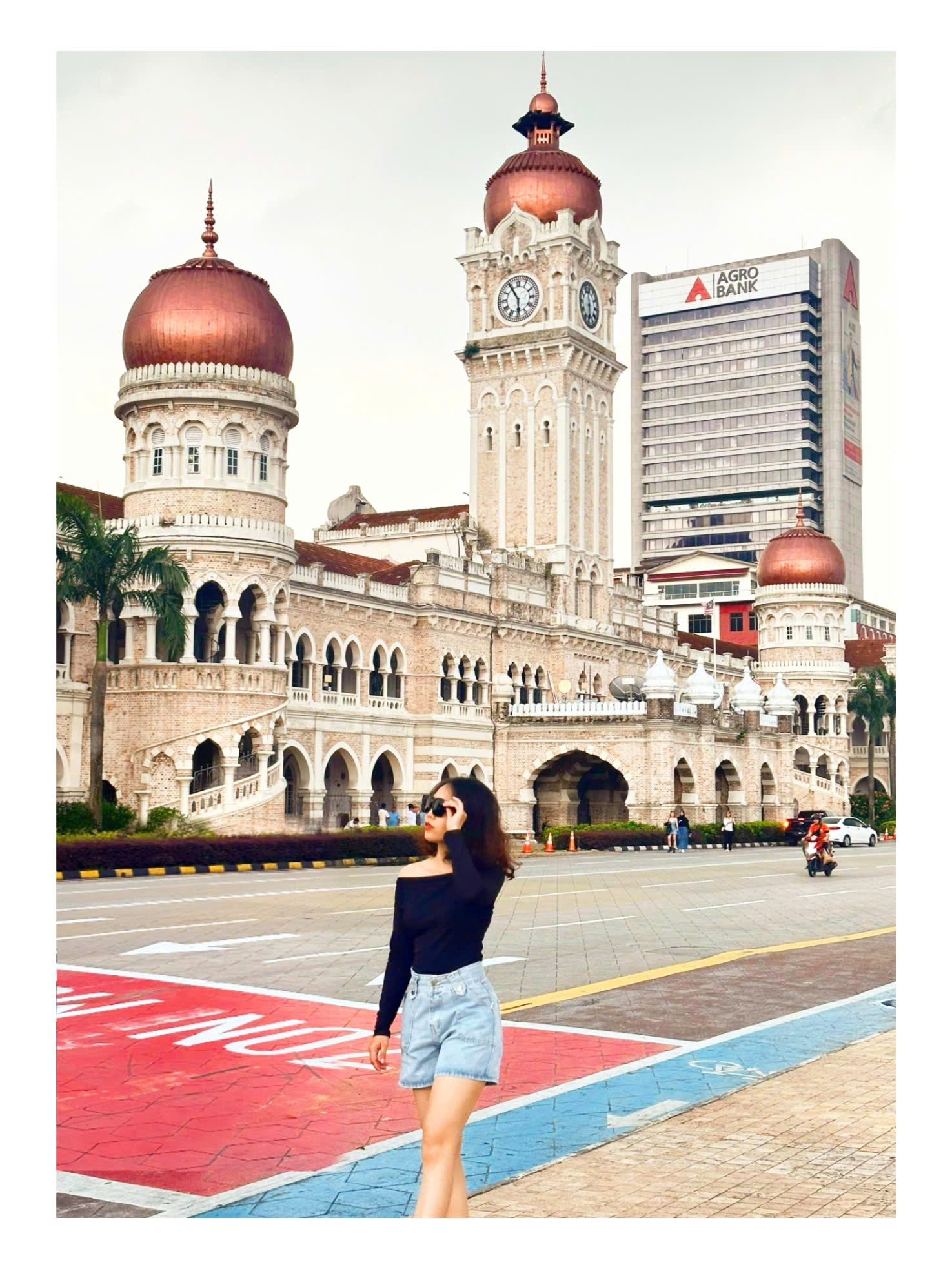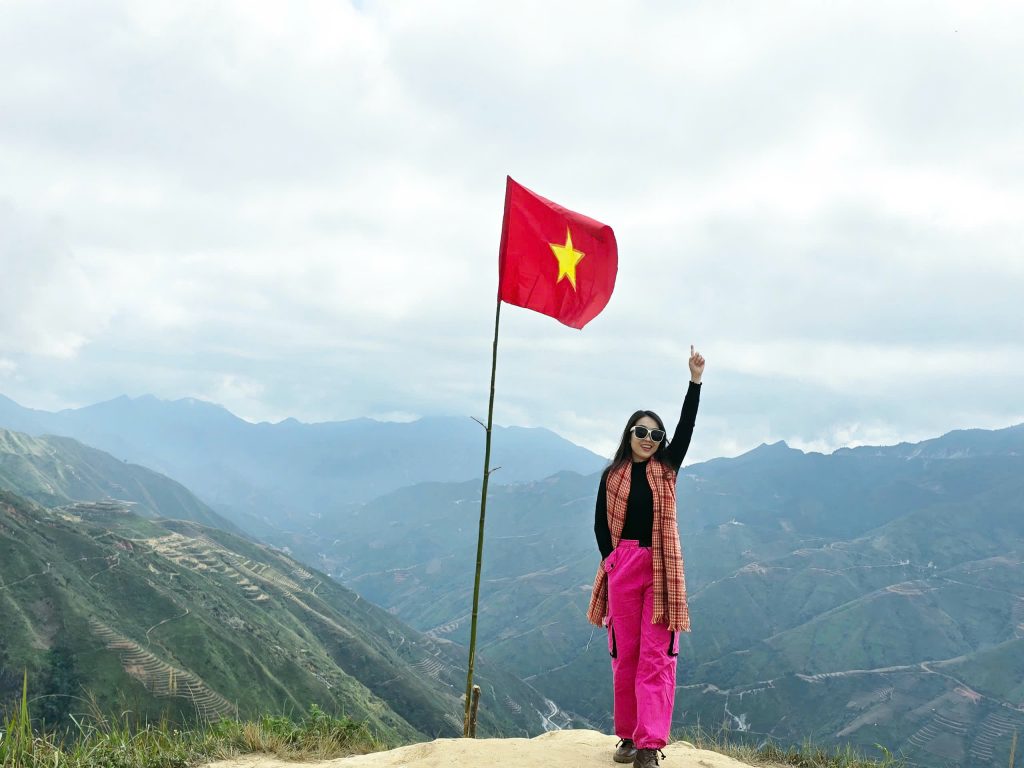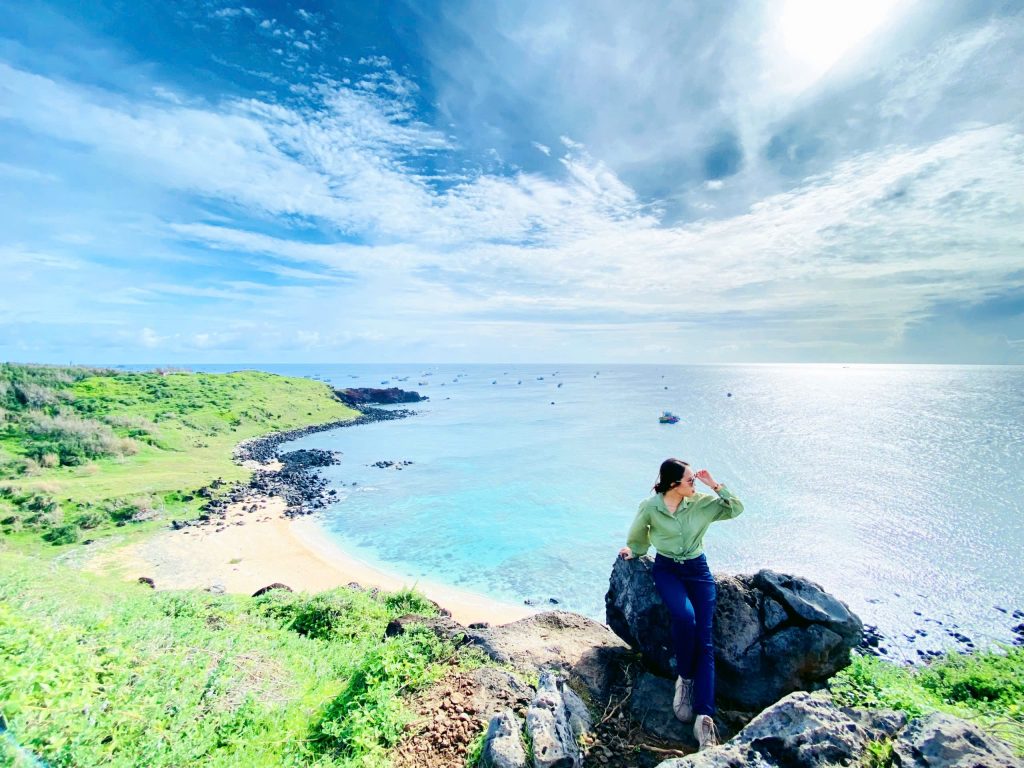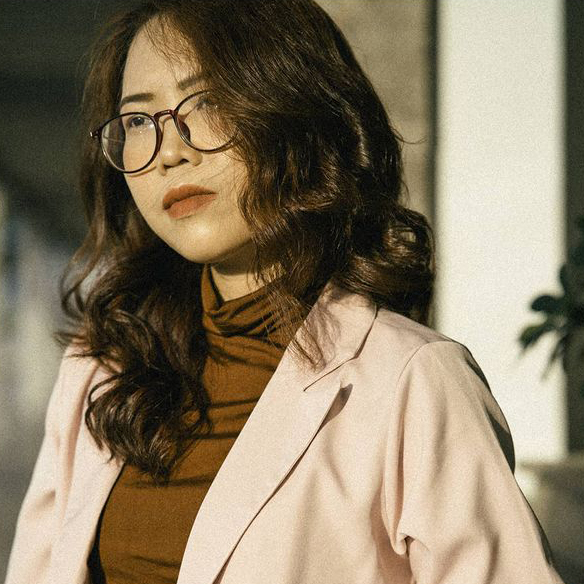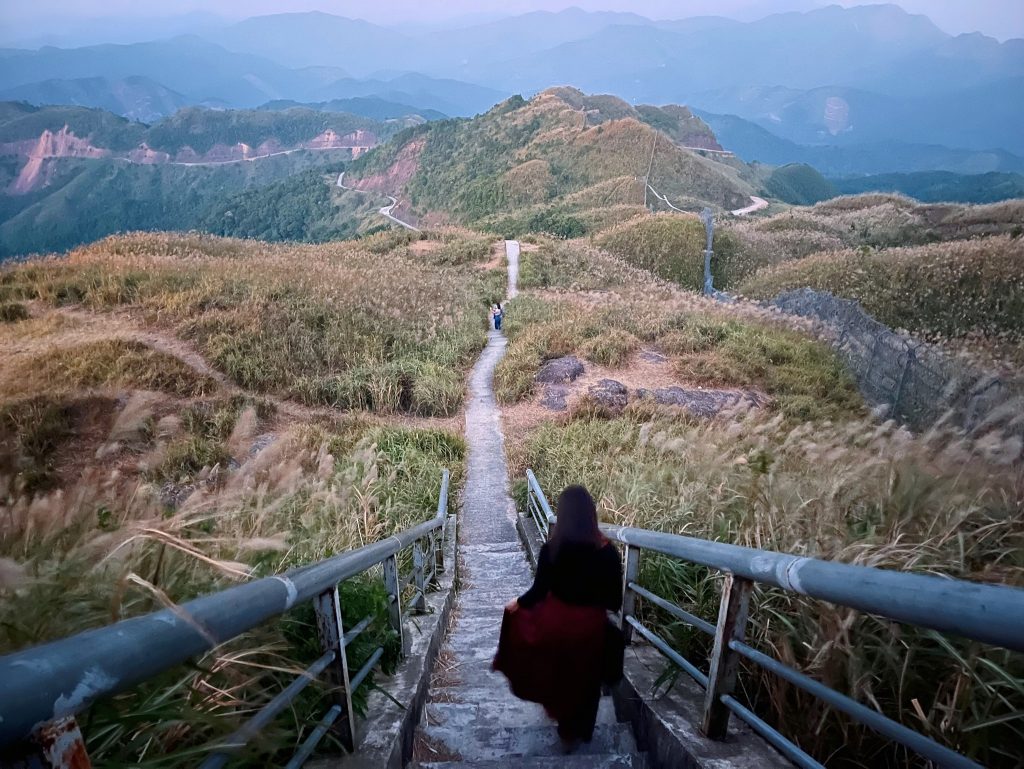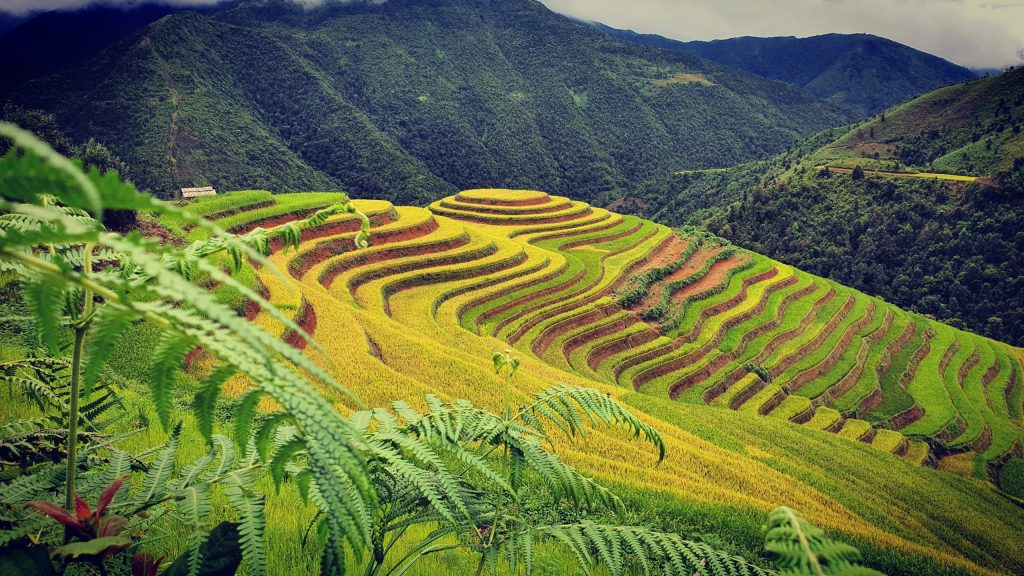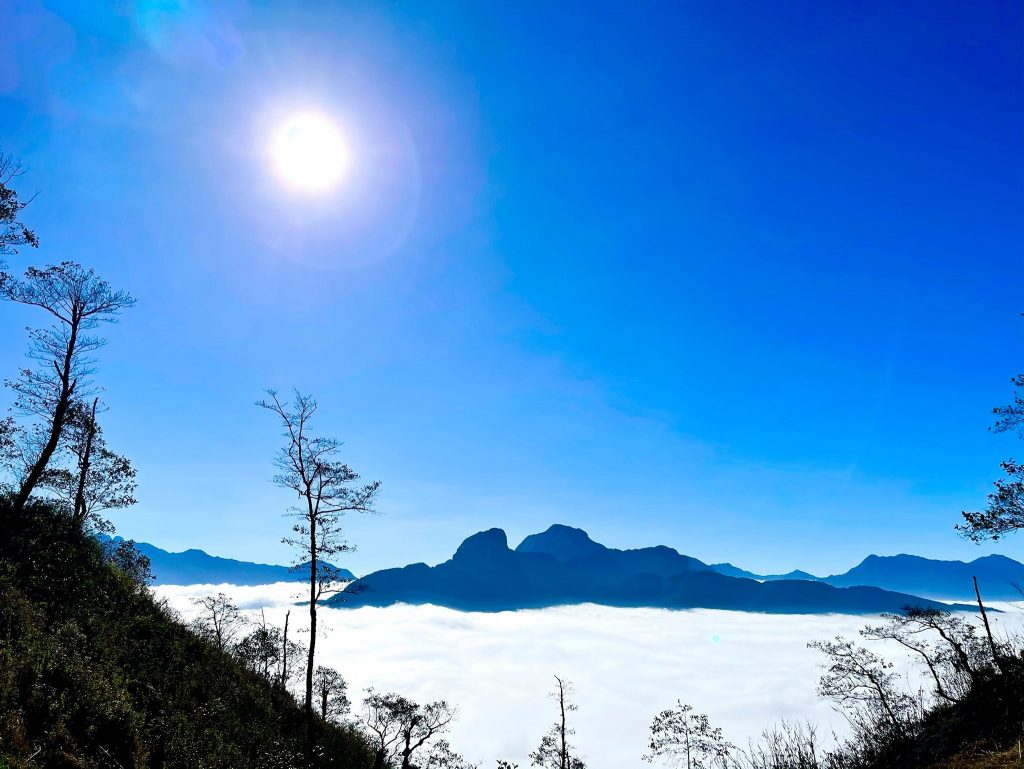Self-Guided travel experience: 4 Days 3 Nights in Kuala Lumpur (Malaysia)
If you’re looking for an international getaway close to Vietnam that’s “delicious – affordable – worth every penny,” rich in culture and architecture, and perfect for budget-savvy travelers who still want to indulge in exquisite cuisine and snap glamorous check-in photos, then Kuala Lumpur — the vibrant capital of Malaysia — is your ideal choice. This dazzling city is a beautiful crossroads where Indian, Chinese, Malay, and Western cultures blend seamlessly, creating an unforgettable travel experience.
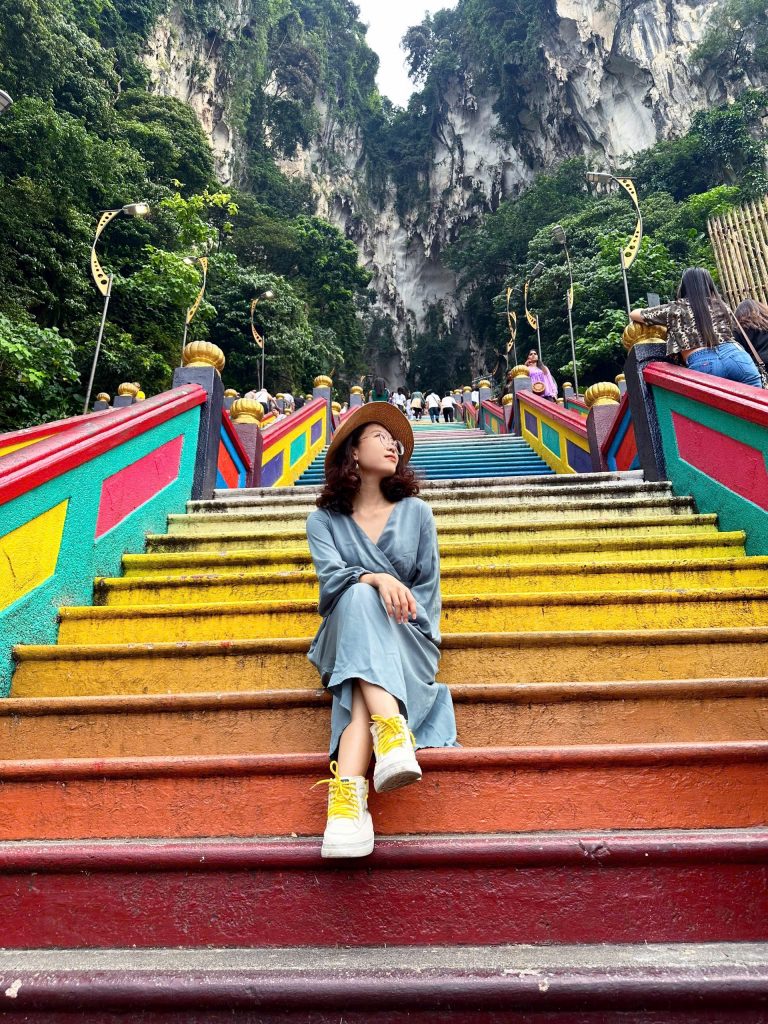
1. Introduction to Kuala Lumpur (KL)
Kuala Lumpur, often called KL, had humble beginnings as a small tin mining town in the 1850s before rising to become the federal capital of Malaysia as we know it today.
Located along the western coast of Peninsular Malaysia, KL is entirely surrounded by the state of Selangor. It’s also home to Malaysia’s Parliament.
The city’s architecture is a fascinating blend of old colonial influences, traditional Asian styles, Malay-Islamic inspirations, modern designs, and postmodern flair. Compared to other Southeast Asian capitals, Kuala Lumpur is relatively young — most of its colonial-era buildings were constructed in the late 19th and early 20th centuries.
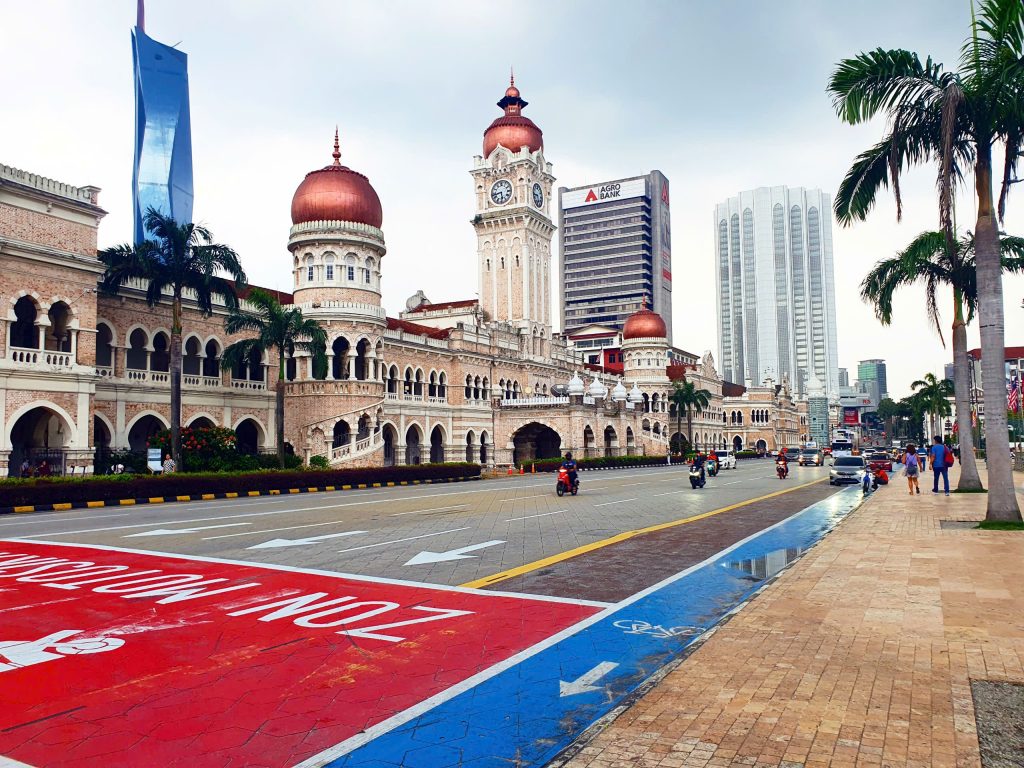
Islam is primarily practiced by the Malay and Indian Muslim communities, while Buddhism, Confucianism, and Taoism are mainly followed by the Chinese community. The Indian community traditionally practices Hinduism. Some Chinese and Indian Malaysians are also registered as Christians.
Currently, about 46.4% of the population are Muslims, 35.7% are Buddhists, 8.5% follow Hinduism, 5.8% are Christians, 1.1% practice Taoism or traditional Chinese beliefs, 2.0% adhere to other religions, and 0.5% are non-religious.
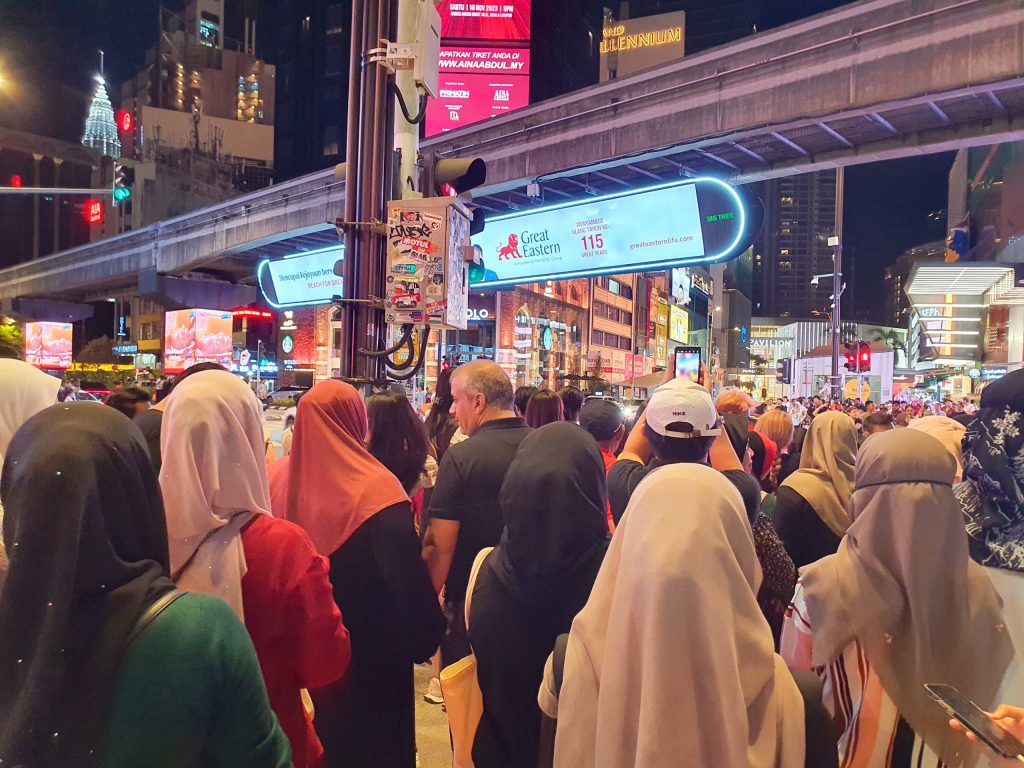
Since the 1990s, Kuala Lumpur has played host to a dazzling array of international sporting, political, and cultural events — from the 1998 Commonwealth Games to the adrenaline-fueled Formula 1 Grand Prix. And of course, no mention of KL would be complete without the iconic Petronas Twin Towers, once the tallest twin skyscrapers in the world and still one of the city’s most breathtaking symbols.
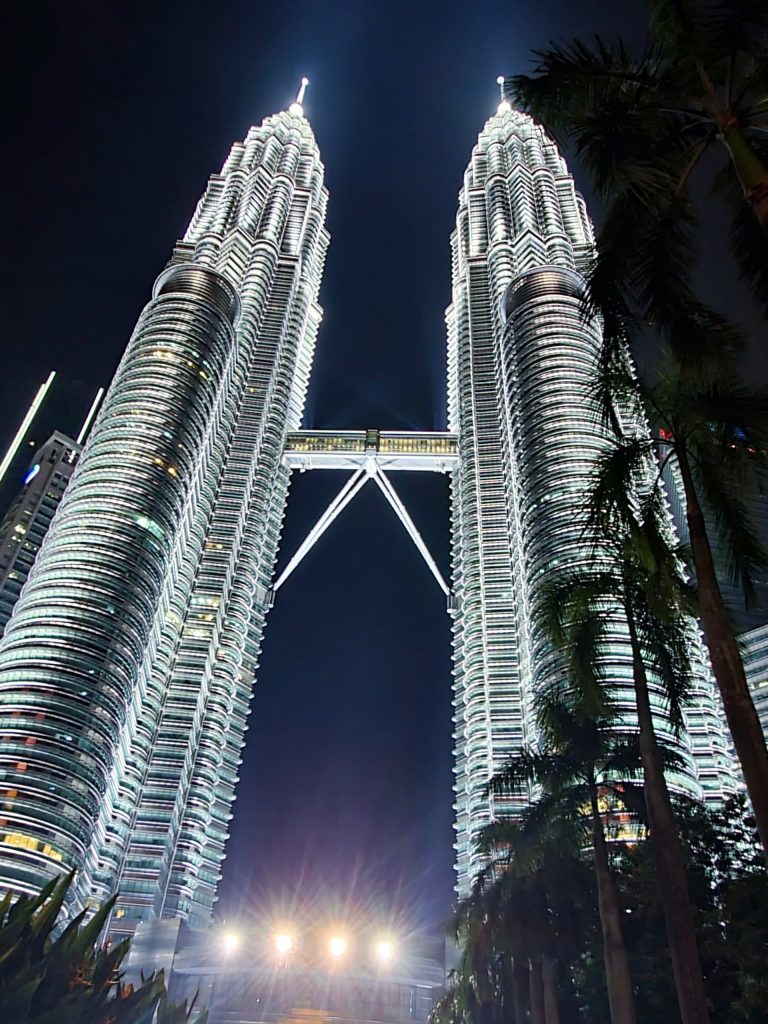
Thanks to its rich cultural diversity, affordable living costs, and an endless variety of food and shopping experiences, Kuala Lumpur has quickly become one of the region’s most exciting and accessible travel destinations.
2. When is the best time to visit KL?
Malaysia has two main seasons: hot and dry, and hot and humid — quite similar to the weather in Ho Chi Minh City. Nighttime temperatures rarely dip below 20°C, so really, you can visit Kuala Lumpur any time of the year. If you’d rather avoid the rain, just steer clear of the wet season around October and November.
That said, when Kame visited KL in November, there was a chance to experience the city’s rain firsthand. And it was quite the adventure — long, persistent showers lasting one to two hours, often accompanied by dramatic thunder and lightning!
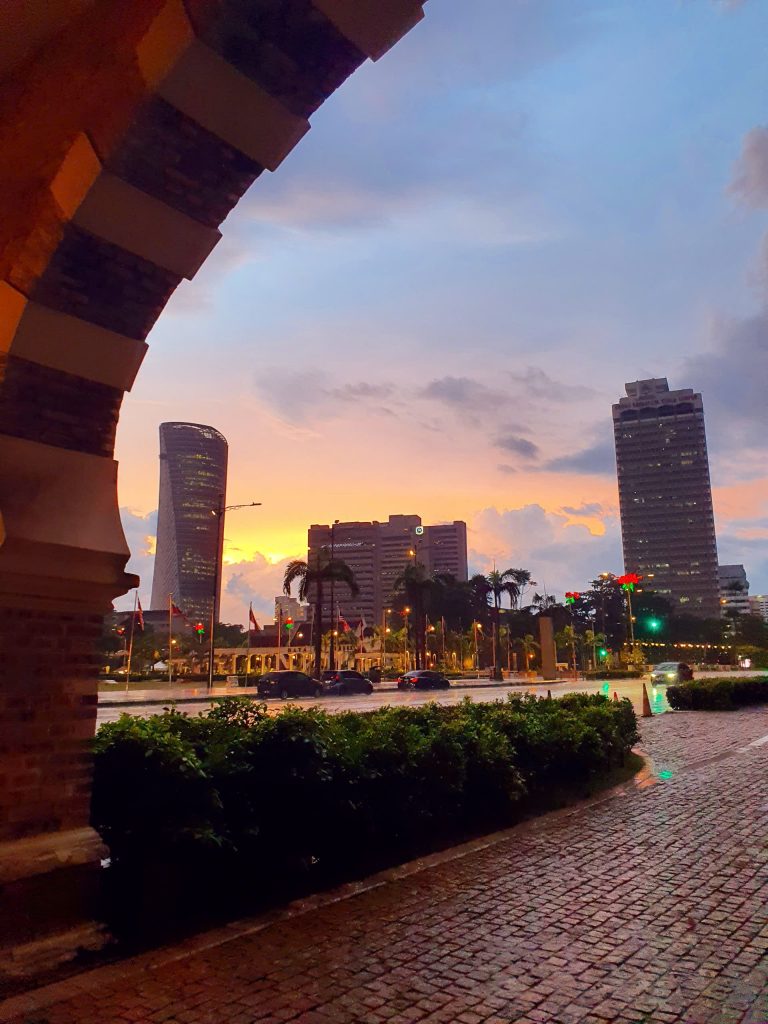
3. How to get there?
✈️ By Air:
Flying from Hanoi to Kuala Lumpur takes about two hours longer than flying from Ho Chi Minh City. There are quite a few airlines operating direct flights from both Hanoi and HCMC to KL, including Vietnam Airlines, Vietjet Air, Malaysia Airlines, and AirAsia.
For my trip, I went with AirAsia — the budget airline that’s been crowned the world’s best low-cost carrier for years. But to be honest, I personally felt Vietjet offered a better experience. AirAsia’s planes are smaller, and if you book an economy ticket, they don’t even offer complimentary water onboard.
The good news? If you hunt for tickets early, you can score some amazing deals. Flights to KL are often much cheaper than flying from HCMC to Hanoi, even though the flight time is about the same. Total win for your travel budget!
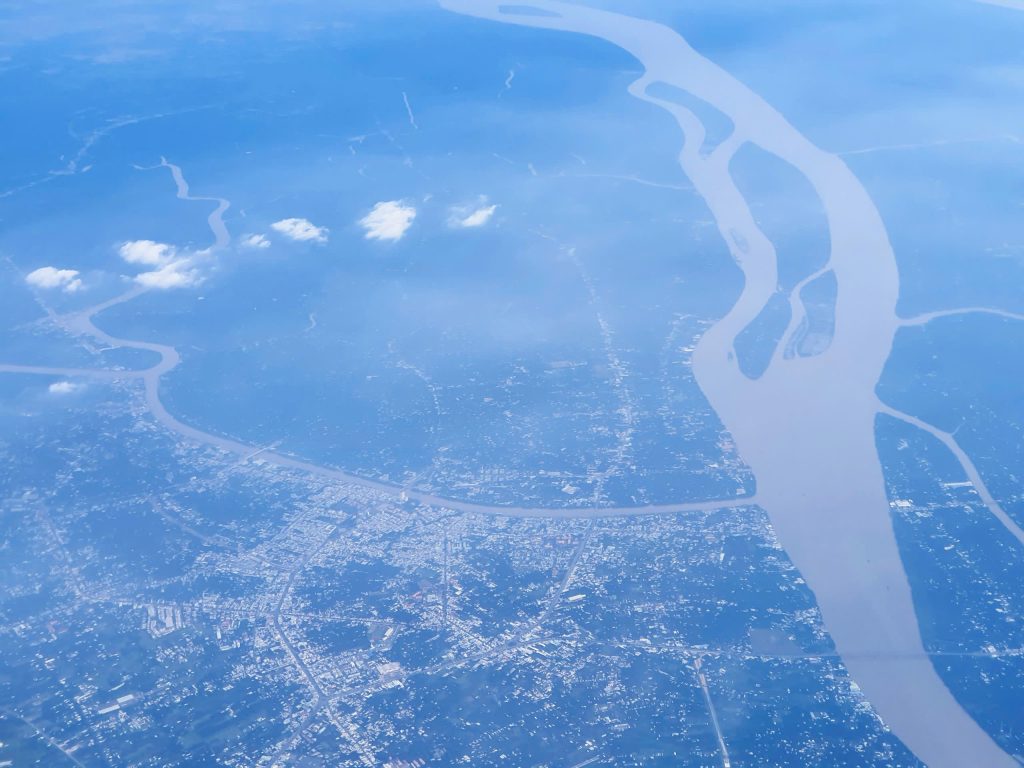
One thing to keep in mind: Kuala Lumpur has two airports. The newer KLIA2 serves AirAsia and several other low-cost carriers, while the older KLIA1 handles the rest of the airlines. For flights from Vietnam, Vietjet Air lands at KLIA2, while Vietnam Airlines operates out of KLIA1. Make sure to double-check your flight details before you travel so you can plan your ground transportation smoothly!

KLIA Ekspres Train:
This is a non-stop express train that connects the airports to the city. It departs from KLIA2, makes a quick stop at KLIA1 to pick up passengers, and then heads straight into downtown Kuala Lumpur. Fast, smooth, and super convenient!
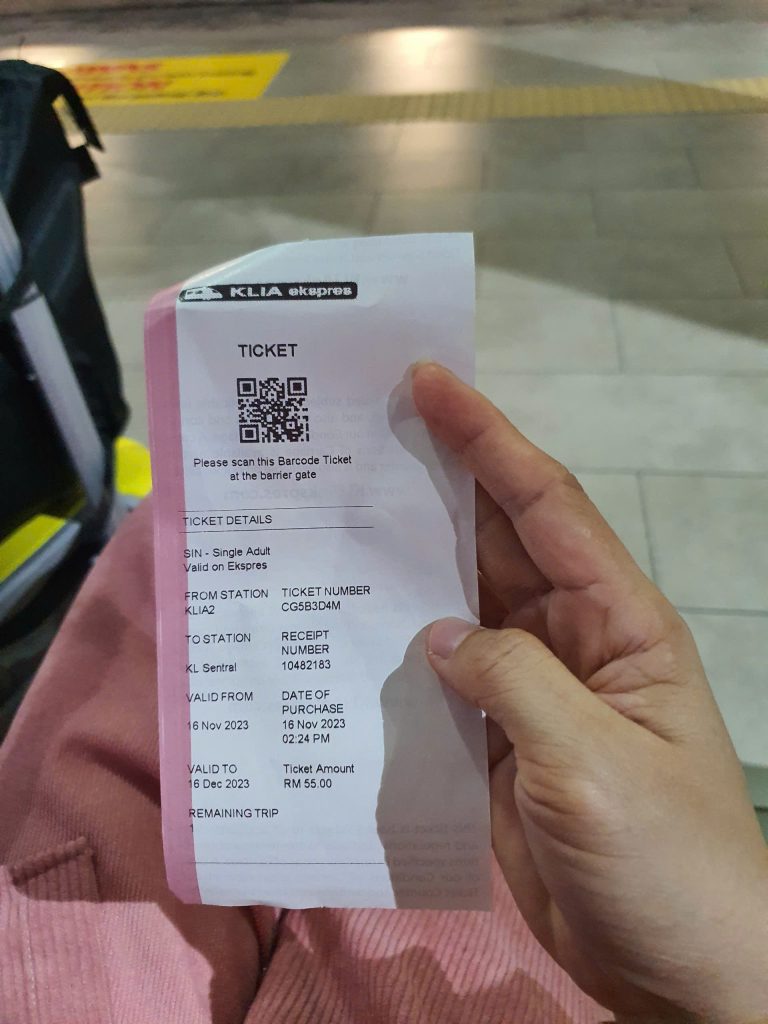
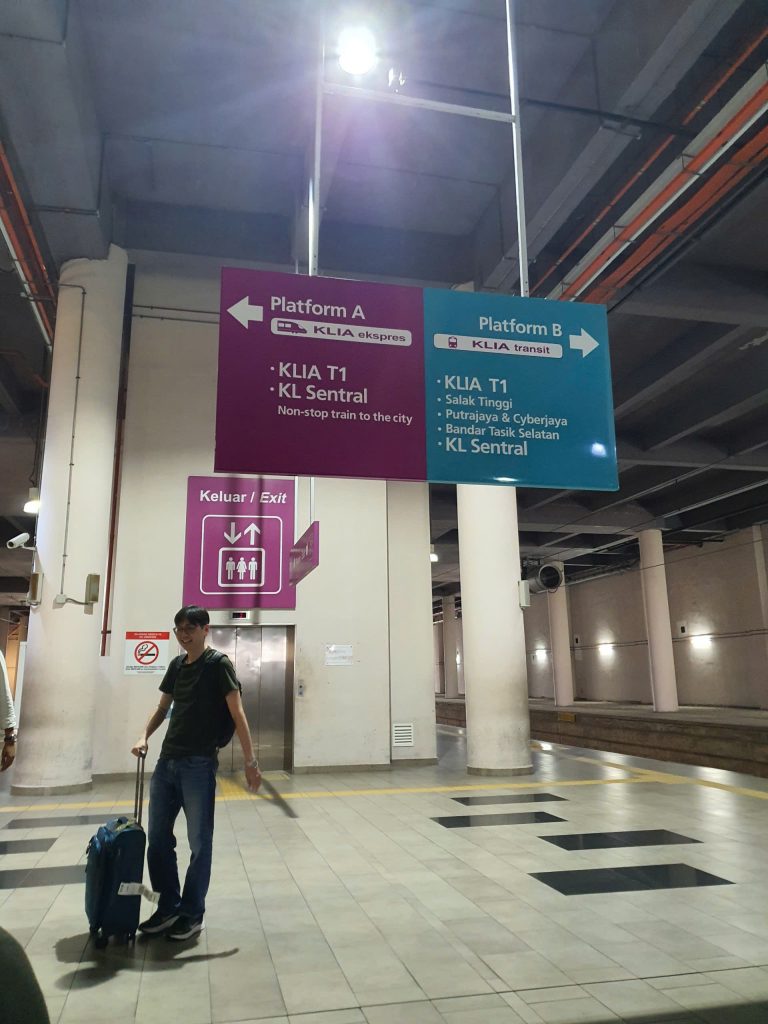
Kame took the one-way trip from the airport to Sentral station and found the train experience quite comfortable. The seats are spacious, there’s air conditioning, free Wi-Fi, and even TVs on board. The service runs from around 5:30 AM to midnight, with trains every 15-20 minutes. The fare is 35 RM one-way. While the price is almost double that of a Grab ride, it’s definitely worth trying out as a tourist. After a long flight, it’s a relaxing way to sit back, enjoy the scenery, and even snap some cool photos for your social media!.
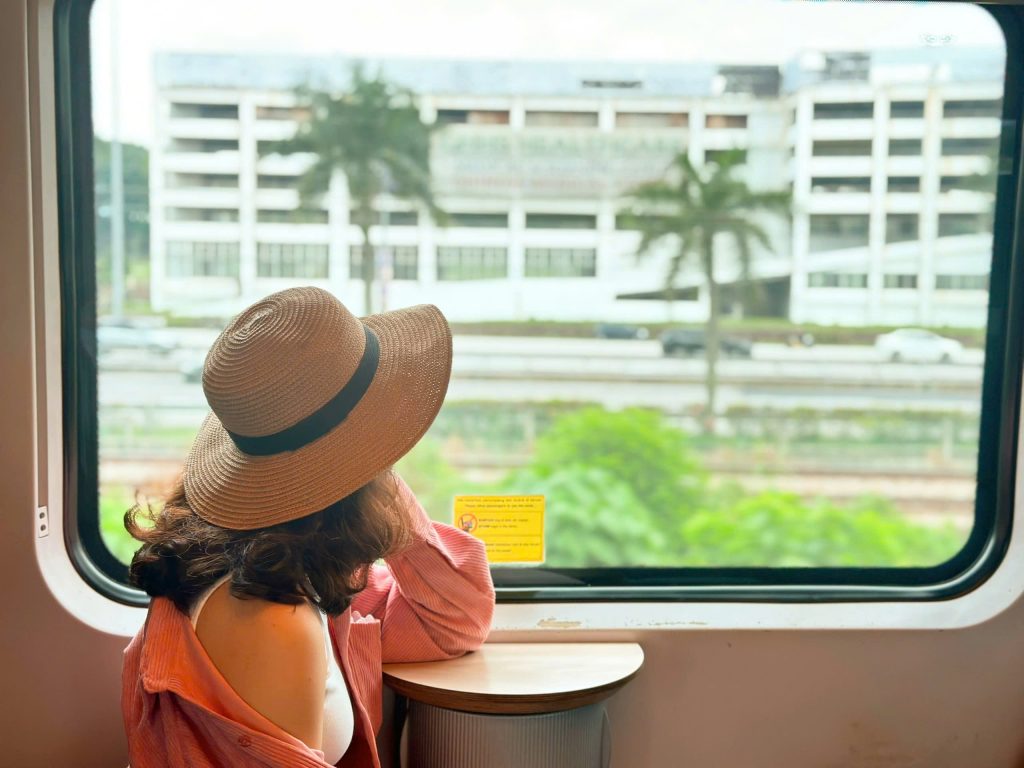
🛵 Motorbike: You can rent a motorbike and ride around the city if you have an international driving license and enough confidence to race alongside the local daredevils. A key thing to note is that there are no designated lanes for motorbikes, and vehicles drive on the left side of the road, unlike in Vietnam. Personally, I find this to be the most dangerous mode of transport for tourists. It’s better to avoid it.
🚗 Taxi: Taxi fares in Kuala Lumpur start at around 3 MYR for the first kilometer, and then 1 MYR for each additional kilometer. Be cautious, as you may encounter some dishonest taxi drivers who try to overcharge you. It’s best to negotiate the fare before getting in and always ensure the taxi meter is on. Most taxis in KL do not have an opening fee. If you’re using a taxi between 12:01 AM and 5:59 AM, there’s a 50% surcharge. In addition to the regular red-and-white taxis, there are also blue taxis, which are more expensive (6 MYR for the first kilometer, 2 MYR for each additional kilometer). Overall, it’s better to avoid taxis in KL.
Bus: RapidKL (covering all of KL) and Go KL City Bus (with four main routes that pass through key areas like KLCC, Bukit Bintang, and Chinatown) are among the most affordable ways to get around Kuala Lumpur. Most of these buses don’t have air conditioning, maps, signs, or information about stop times. Fares range from 1 MYR to 5 MYR depending on the number of stops. The buses run daily from 6:00 AM to 11:00 PM.
LRT (Light Rail Transit):
+The LRT system consists of three RapidKL lines: Ampang – Sentul Timur (Yellow Line), Sentul Timur – Sri Petaling (Green Line), Kelana Jaya – Terminal Putra (Light Purple Line)
Fares range from 0.7 MYR to 2.8 MYR. The LRT is fast and takes you through central areas, main streets, and popular hotels. It’s definitely worth a try!
+In addition, there are two Komuter lines: Tanjung Malim – Sungai Gadut (Blue Line), Batu Caves – Pelabuhan Klang (Red Line)
🚗 Grab Car: The most convenient way to get around Kuala Lumpur is definitely Grab. You can know the fare and distance in advance, track your journey, and see the driver’s details right in the app. The best part is that it’s affordable and very convenient for groups of 3 or more people. Just download the Grab app in Vietnam and make sure you have an international SIM card that works in Malaysia, and you’ll be able to use it just like you would in Vietnam. Plus, the drivers speak excellent English, which is a huge bonus!
4. Accommodation
Kuala Lumpur is the sixth most-visited city in the world, with 8.9 million tourists every year. Many major international hotel chains have a presence in the city, so finding accommodation during your trip is never difficult. However, it’s best to choose hotels in areas where you’ll be spending the most time to make your travel more convenient.
Do keep in mind that when you check into your accommodation, you’ll likely need to pay an additional 2-10 MYR per person per night for the Malaysian government’s tourism tax. This fee is usually paid in cash directly at the hotel and is not included in the room rate.
=> Tip: It’s best to book accommodation near MRT stations or food hotspots for easy travel and to avoid long waits due to traffic.

***Bukit Bintang Area
Kame stayed at Axon Hotel in the lively Bukit Bintang area, home to some of the city’s most iconic shopping malls like Berjaya Times Square, Pavilion, BB Plaza, Lot 10, and Fahrenheit. It’s also a paradise for foodies, with everything from Malaysia’s famous local dishes to international favorites. Plus, it’s conveniently located near vibrant street art and offers easy access to other must-see attractions. The hotel itself offers stunning views of the Petronas Towers and the Kuala Lumpur skyline at night, and it even has a gorgeous infinity pool.
It’s an apartment-style accommodation, so it’s perfect for groups of four or families. It comes with a washing machine and a fairly well-equipped kitchen, all at an affordable price. If you’re looking for a more luxurious view, there are other hotels in the city center, but they tend to be pricier.
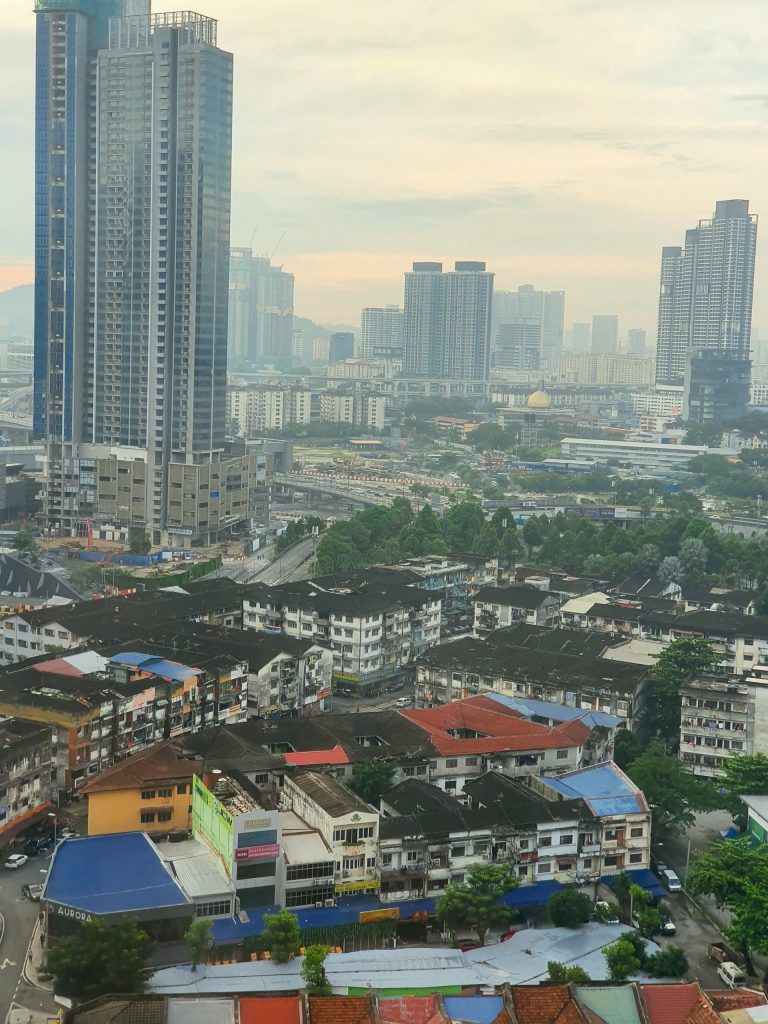
***Chinatown Area
This street is packed with Chinese shops offering budget-friendly prices, as well as various items like bags, souvenirs, and affordable clothing. Just a short walk (5-10 minutes) from Chinatown is Central Market, a traditional market that has been around for a long time. It mainly sells souvenirs and handcrafted items that reflect the local culture and heritage of Kuala Lumpur.
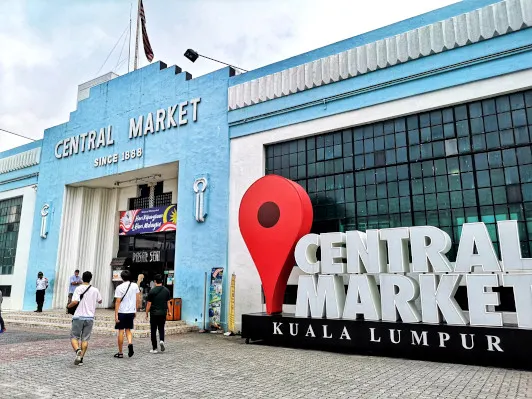
***KL Sentral Area
KL Sentral is a major transportation hub in the city, making it a convenient spot if you plan to rely on public transportation during your stay. It’s also quite close to the Little India area, adding to the convenience for exploring.
If you’re looking to indulge, Tropicana the Residence Hotel comes highly recommended. With breathtaking views of the Petronas Towers just steps away, it’s a great choice for those wanting a premium experience. Just make sure to book ahead, as rooms tend to fill up quickly.
5. When is the best time to visit Kuala Lumpur?
Kuala Lumpur has a warm, tropical climate with sunshine year-round and plenty of rain. From October to March, the northeast monsoon cools the weather, making it a pleasant time to visit. You can really travel to Kuala Lumpur any time of the year, as long as you can find a good flight deal!
If you’re looking to explore the city and enjoy some beach time, June and July have the least rain, making them perfect for sightseeing and outdoor activities. For those who love shopping or want to experience the festive atmosphere, the end of the year and early January is the best time. The city sparkles with Christmas lights, spectacular New Year’s Eve fireworks, and huge sales with discounts of up to 80%. It’s the perfect time for a fun and festive escape!

Kame visited during the tail end of Kuala Lumpur’s rainy season, experiencing a dramatic thunderstorm that lasted over two hours. Despite that, there were plenty of moments when the weather turned quite hot, making it very similar to the climate of Ho Chi Minh City—essentially a perfect match.
6. Food in KL:
For a deeper dive into the city’s culinary delights, I’ve written a separate post on the best food to try. Be sure to take a look!
7. Itinerary review: 🧚🧚🧚
##Day 1: HCMC-KL
Kame booked an AirAsia flight in the afternoon, so we landed at KL Airport around 2 PM local time. Just a heads-up, Malaysia is one hour ahead of Vietnam, so while it’s 6 PM in Malaysia, it’s still bright outside.
Important Note: Kuala Lumpur has two airports. The new airport (KLIA2) is where AirAsia and other budget airlines land, while the older airport (KLIA1) is for other airlines. For Vietnamese carriers, VietJet uses KLIA2, and Vietnam Airlines uses KLIA1. Be sure to double-check your flight details before you travel to plan your transportation accordingly!
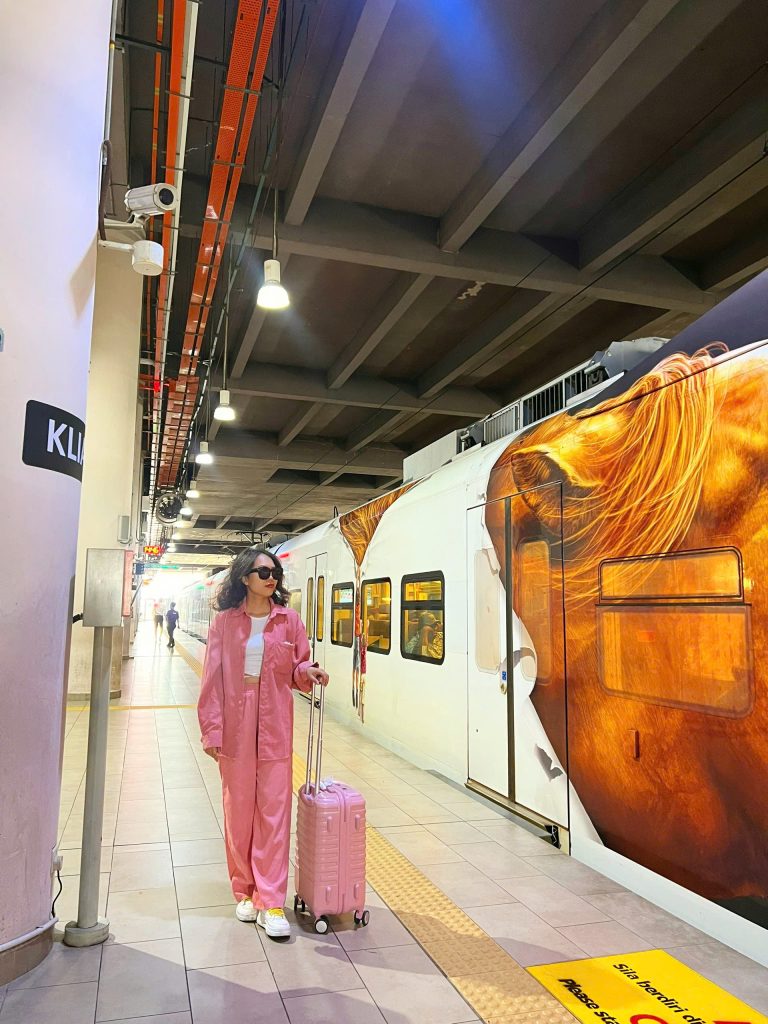
- Kame landed at KLIA2 and decided to try the KLIA Ekspress train, which cost nearly three times more than taking a Grab from the airport to central KL, but it was totally worth it. I bought the ticket right at the airport exit—paid in cash, and of course, I exchanged money in Vietnam before the trip. The exchange rate at the time was 1 MYR = 5,300 VND. Then, following the signs, I headed down to the basement and hopped on the train to KL Sentral. The wait and the ride were a breeze, and I even managed to create an entire photo album during the journey. It was cool, clean, time-efficient, and the entire trip only took about an hour!
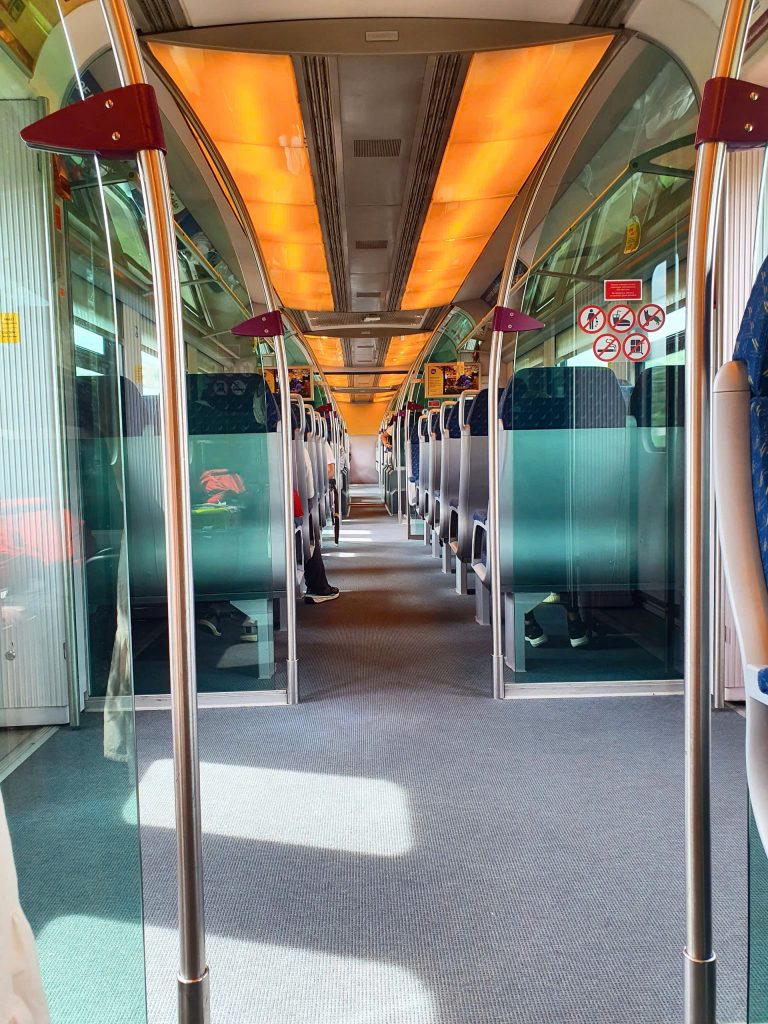
- Check-in at the hotel: I arrived around 4 PM. Since I had booked the room on Booking.com, a hotel sales rep was there to greet me. They were really friendly and welcoming. However, the hotel felt a bit lackluster. The entire building only had two security guards sitting at the front desk. After filling in the check-in details, the sales rep escorted me to my room, and from then on, access to the building was just with a keycard, so I never saw security again. Honestly, I wouldn’t recommend this hotel, especially if you’re traveling alone and as a female, as the safety might be a concern.

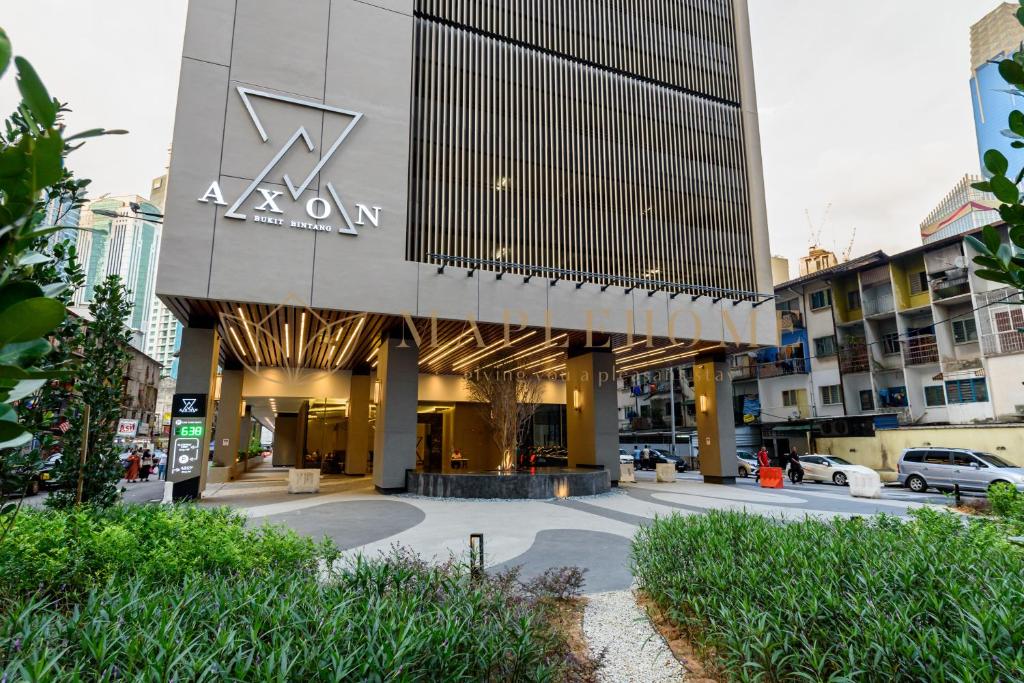
- After a short rest, we headed out for a stroll to the famous night market, Jalan Alor – the busiest and most vibrant market in Bukit Bintang, KL.
Jalan Alor is a bustling street lined with countless food stalls offering a mix of Malaysian delicacies and dishes from neighboring countries. You’ll find everything from Thai to Vietnamese, Indian, and Chinese cuisine. Prices tend to be a bit higher here, as it’s a popular spot for tourists, with most dishes costing around 200,000 VND or more.
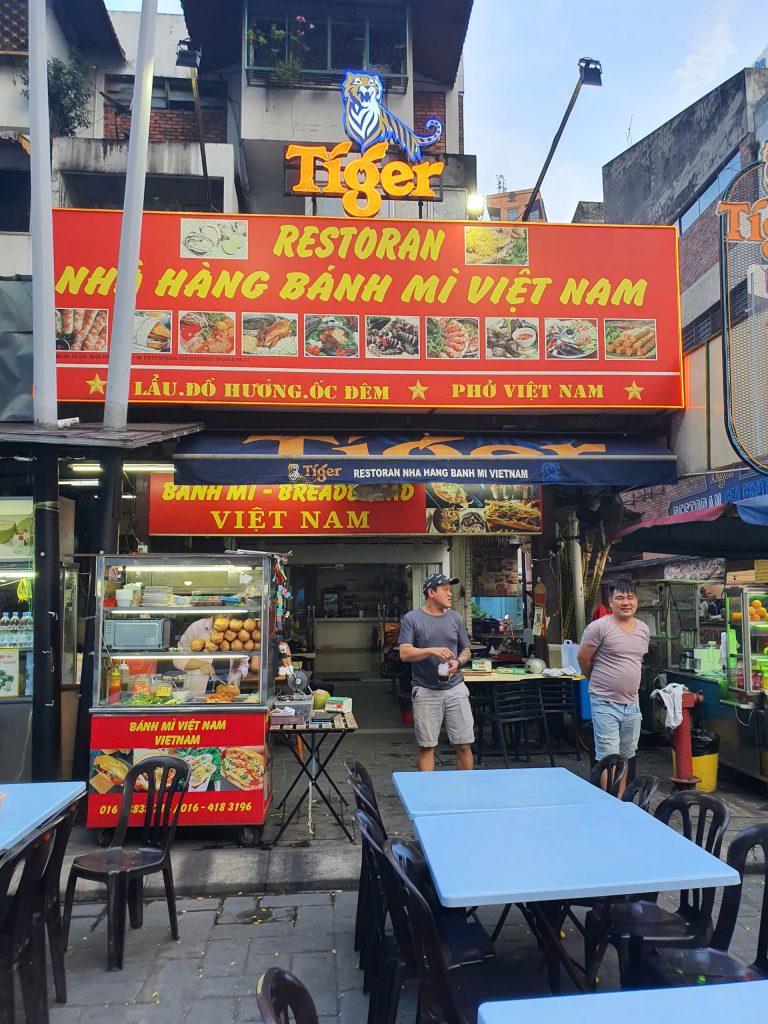
The busiest and most vibrant time at Jalan Alor is after 9 PM. By around 3 AM, most of the food stalls start to wrap up for the night. Only a few places stay open to serve food in the morning or during lunchtime.

For a more affordable option, I recommend heading to the end of the street where the food carts are located. On my first day, I indulged in some Thai dishes, which were surprisingly delicious, along with a variety of snacks that were quite satisfying. However, apart from the durian, the fruits didn’t quite measure up to those back in Vietnam. The strawberries, though tempting, were a letdown, but the coconut was refreshing—packed with water and reasonably priced, making it a perfect thirst-quencher.
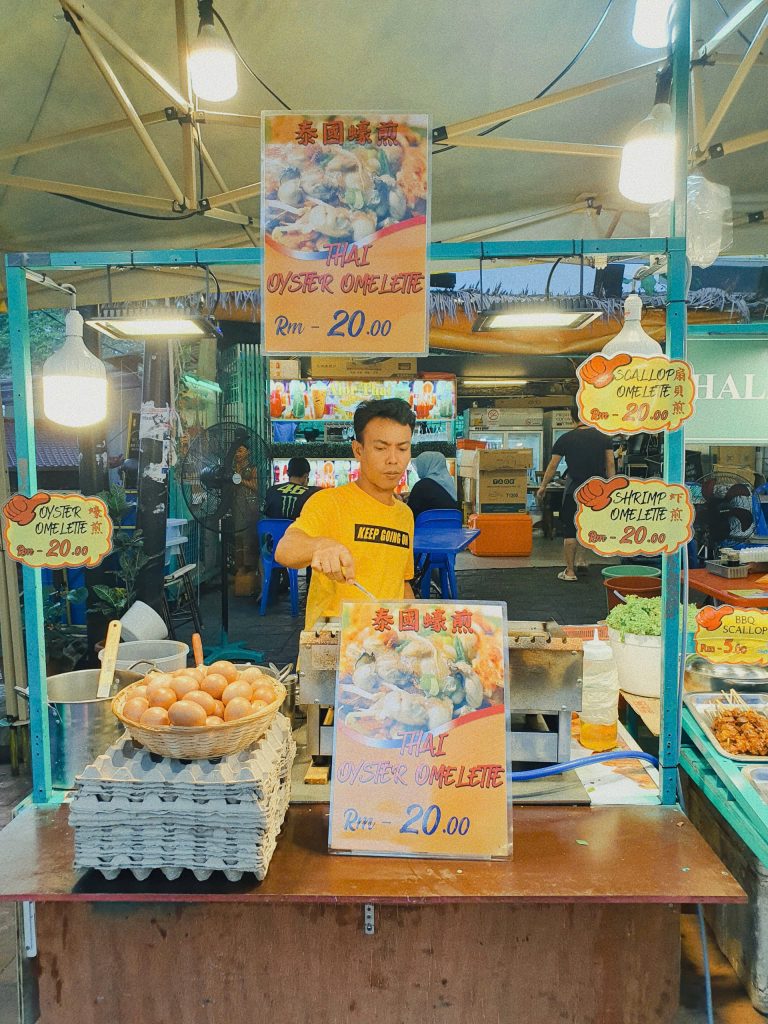
*** There are two types of durians here: Black Thorn and Musang King. Personally, I find Black Thorn (the darker variety) to be just as delicious as the ones back home, while Musang King is pretty average. As a result, Black Thorn is quite expensive. In this market, durian is sold everywhere, making it a paradise for durian fans.

Around the Jalan Alor area, you’ll also have the chance to encounter many street performers. You can enjoy free live music as plenty of young people gather at Jalan Alor to sing and earn extra income every night.
After a satisfying meal, we headed back to the hotel to freshen up, then took a Grab to the iconic Petronas Twin Towers.
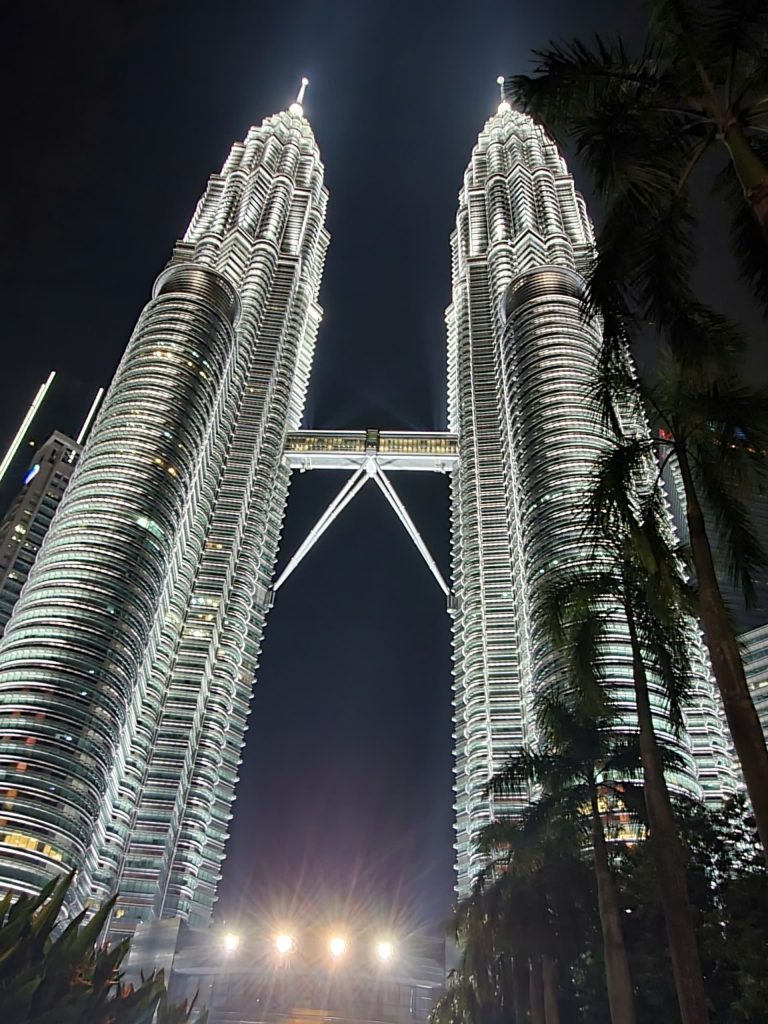
The Petronas Twin Towers stand as a symbol of Malaysia’s growth and grandeur. This stunning architectural masterpiece, built by the country’s leading oil and gas corporation, is a perfect blend of traditional Islamic design and modern elegance. The twin towers rise to 88 floors, connected by an aerial bridge on the 41st and 42nd floors, offering a breathtaking view that captivates all who gaze upon it.
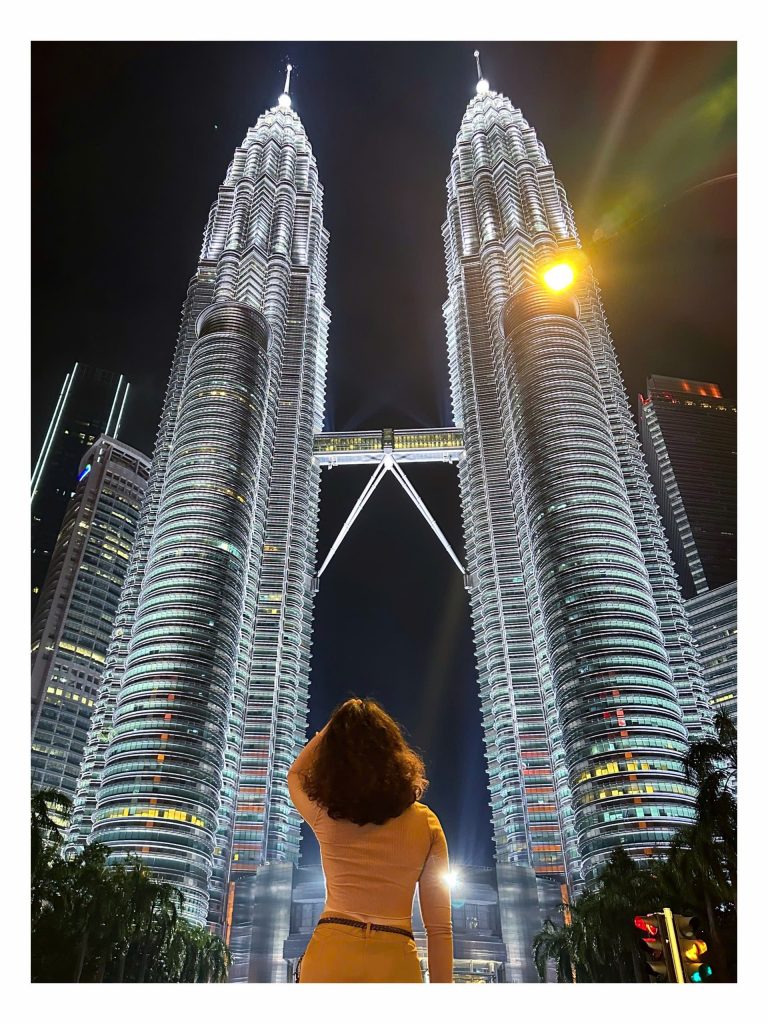
If you have more time to spare, be sure to check out the Skybridge—a stunning architectural feat that connects the world’s tallest twin towers at a dizzying height of 170 meters, spanning 58 meters in length. As you step onto the bridge, you’ll feel a gentle sway with the breeze, adding a thrilling touch to your experience. For those who love to shop, Suria KLCC is a must-visit—this luxurious shopping haven sits at the foot of the Petronas Towers, featuring hundreds of high-end brands, from fashion and cosmetics to home goods, gourmet dining, cafés, and even a cinema. And if you’re in the mood for a relaxing escape, take a leisurely stroll through the lush KLCC Park, right next to the towers, offering a peaceful retreat with a stunning view of the city.

The Petronas Twin Towers truly shine at night, glowing with a mesmerizing radiance. The area is always bustling with tourists, adding to its vibrant atmosphere. There’s also a photo service where you can capture the iconic shot with a flash—perfect for snapping memories. Strolling around the area is quite fun, and the lively energy makes it even more enjoyable. By around 11 PM, we headed back to the hotel to rest.
=> END OF DAY 1
##Day 2: Batu Caves – Jalan Alor Street Art – Merdeka Square
Knowing that Batu Caves can get crowded later in the day, we decided to start early. We woke up at 6 AM, but it was still dark, and by 7 AM, the sun hadn’t quite risen. The streets were quiet, and we hesitated a bit. In the end, we left around 8:30 AM. Batu Caves is about 13 km from our hotel, and the Grab ride cost around 11 MYR one way.
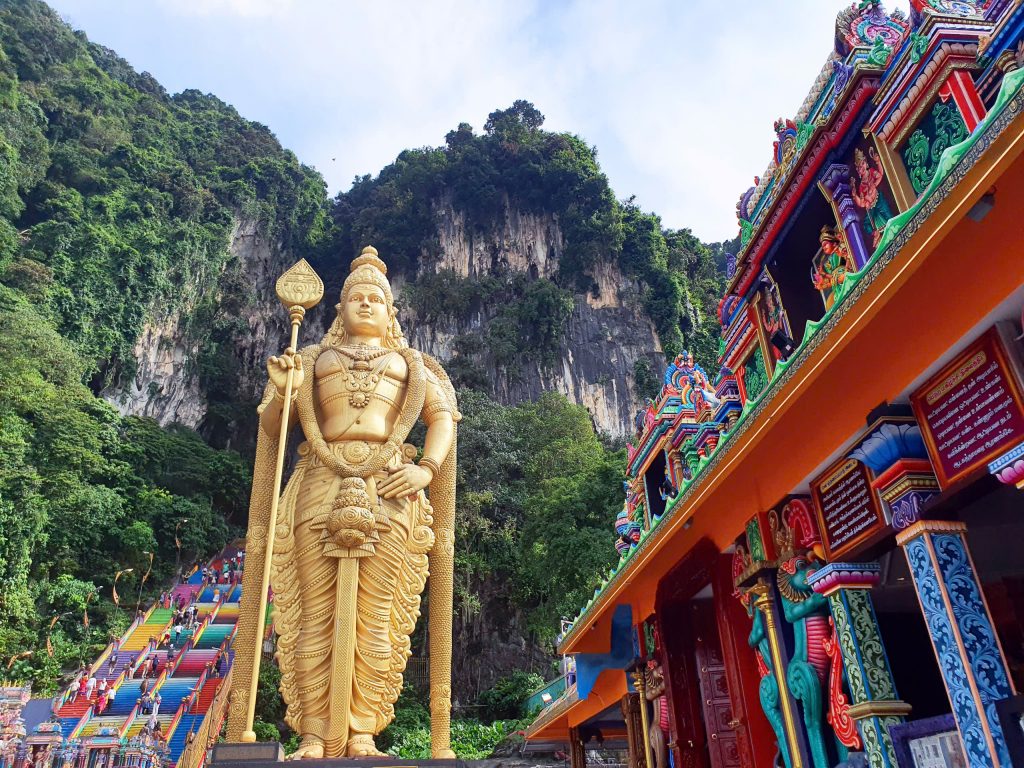
When we arrived, it was still quite empty, so we took the opportunity to snap some photos. We strolled around the square, so caught up in taking pictures that I almost forgot to climb the Rainbow Steps. But by the time I remembered, tourists and locals heading to worship had started to flood in, making the place incredibly crowded. If you visit KL, this is a must-see spot, rich in Indian cultural heritage within Malaysia’s multicultural landscape.
Batu Caves
Hidden within a limestone hill in Gombak District, about 15 kilometers north of Kuala Lumpur, Batu Caves is a site steeped in history — the limestone itself is over 400 million years old. In the 19th century, an Indian merchant named Thambusami discovered the caves. However, they were left forgotten for a time until, in the early 20th century, Indian workers in Malaysia, seeking a place to worship, rediscovered them. Since then, Batu Caves has been transformed into one of the most important Hindu shrines outside of India.
The first highlight that greets visitors on their journey to Batu Caves is the towering statue of Lord Murugan, a revered deity in Hinduism. Standing proudly at 42.7 meters tall and coated in brilliant gold, the statue exudes a sense of grandeur and divine power. Its striking golden hue stands in vibrant contrast to the lush greenery of the surrounding limestone hills, creating a breathtaking, unforgettable introduction to this sacred site.
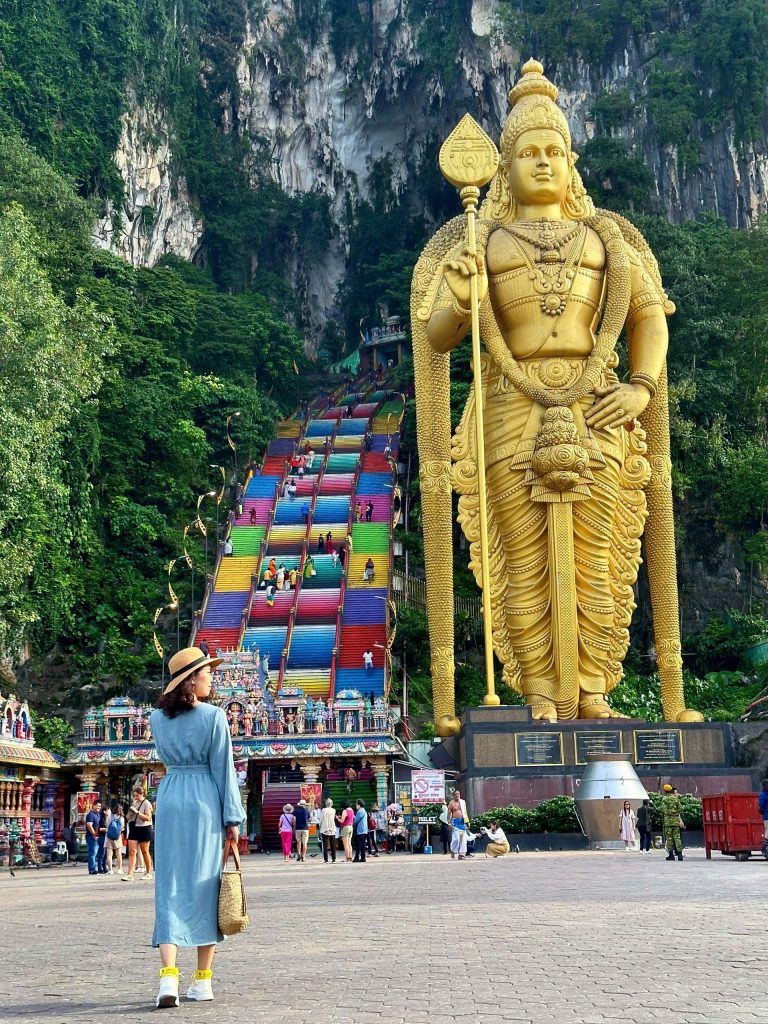
Next on the adventure at Batu Caves is the enchanting climb up 272 rainbow-hued steps, winding along the ancient limestone cliffs. Painted in a cascade of brilliant colors in 2018, the staircase feels almost magical, like walking through a dream. Each step draws you closer to the heart of this sacred place, and for travelers, it’s a moment of wonder and beauty — a memory you’ll want to hold onto long after you leave.
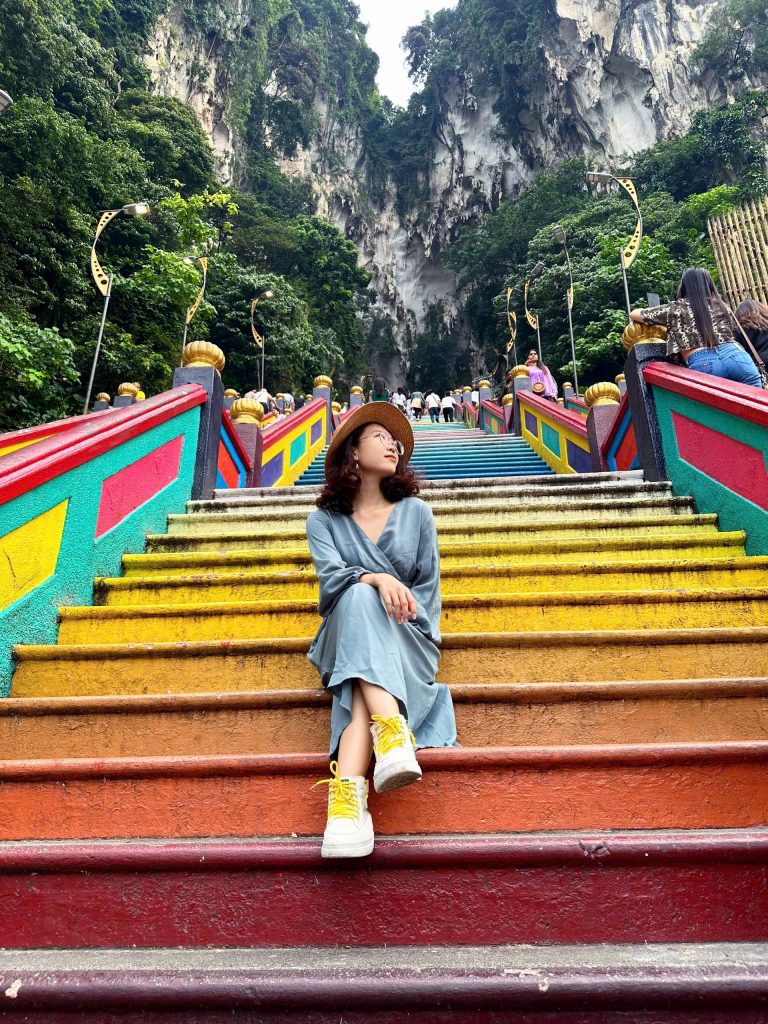
After the colorful climb up 272 steps, you’ll be rewarded with the breathtaking Cathedral Cave, also known as the Temple Cave. The cavern rises dramatically, with ceilings soaring over 100 meters high, wrapping you in a sense of wonder. As you step into its cool, shadowy embrace, your eyes are drawn to the magnificent Hindu shrines — intricate carvings, vivid colors, and sacred statues that seem to whisper ancient stories. The air feels almost magical, and every corner glows with a mystical energy, making you feel like you’ve wandered into a hidden, sacred world.
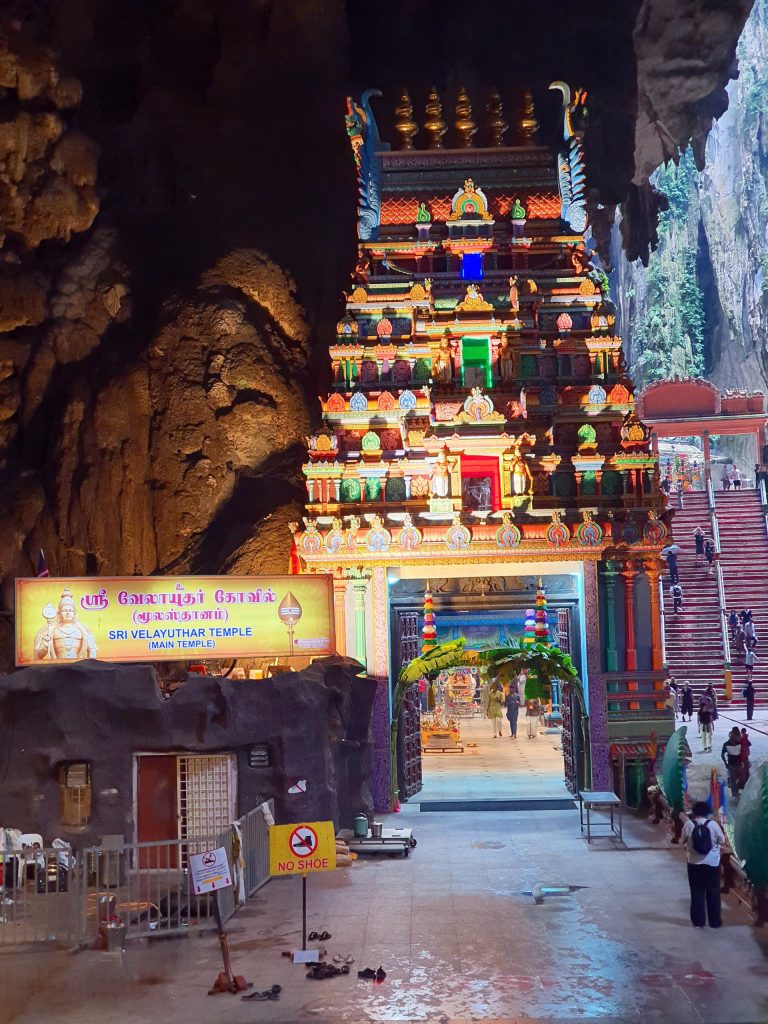
At the Temple Cave, you’re not only mesmerized by the beauty of the sculptures and majestic architecture but also invited to dive into the rich cultural and spiritual tapestry of Hinduism. Every statue, every intricate detail holds a story — tales of devotion, gods, and ancient traditions — creating an experience that feels as enchanting as it is enlightening.
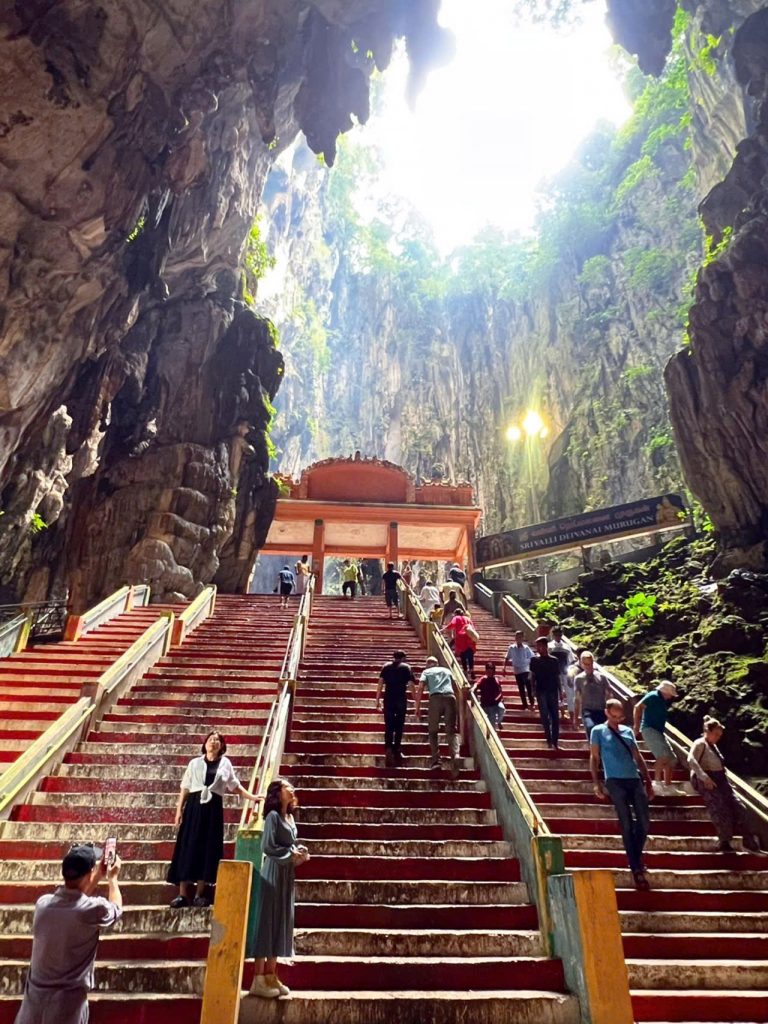
At the far end, a staircase leads you to a second open-air cave, where sunlight pours in and the sacred atmosphere feels even more magical.
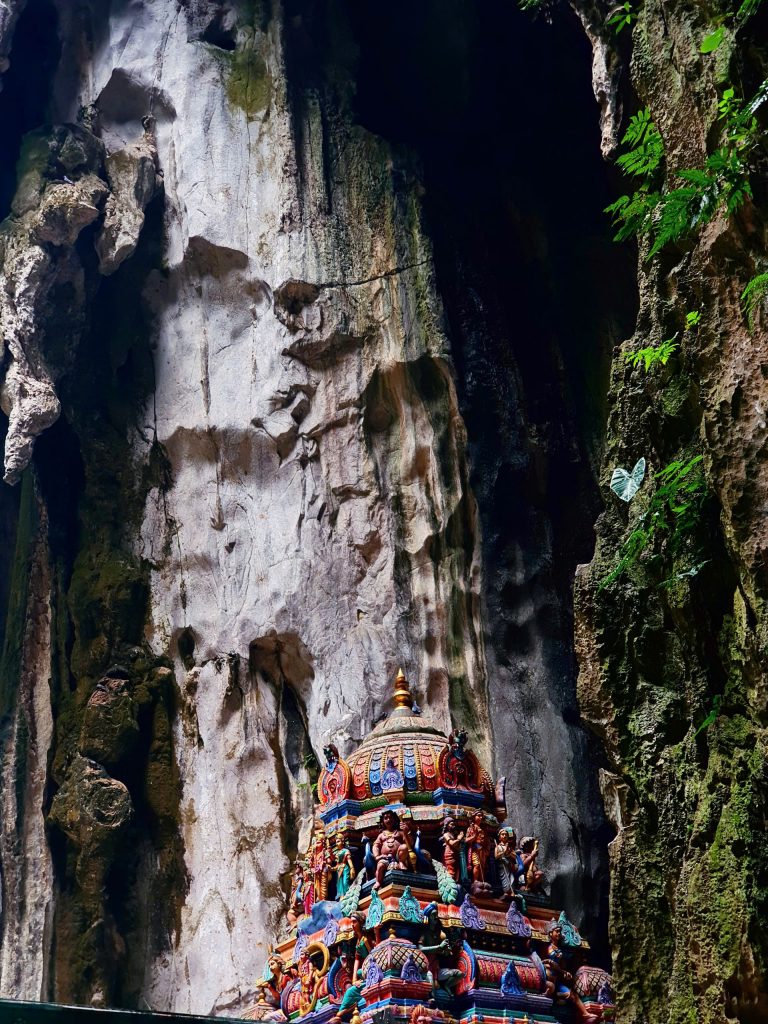
At Batu Caves, you’ll encounter plenty of wild monkeys roaming freely — from the stairways all the way into the caves. It’s best not to carry any food or drinks with you, as the monkeys are notorious for snatching whatever they can. Also, keep a close eye on your belongings like wallets and phones, as these cheeky creatures have been known to steal just about anything!
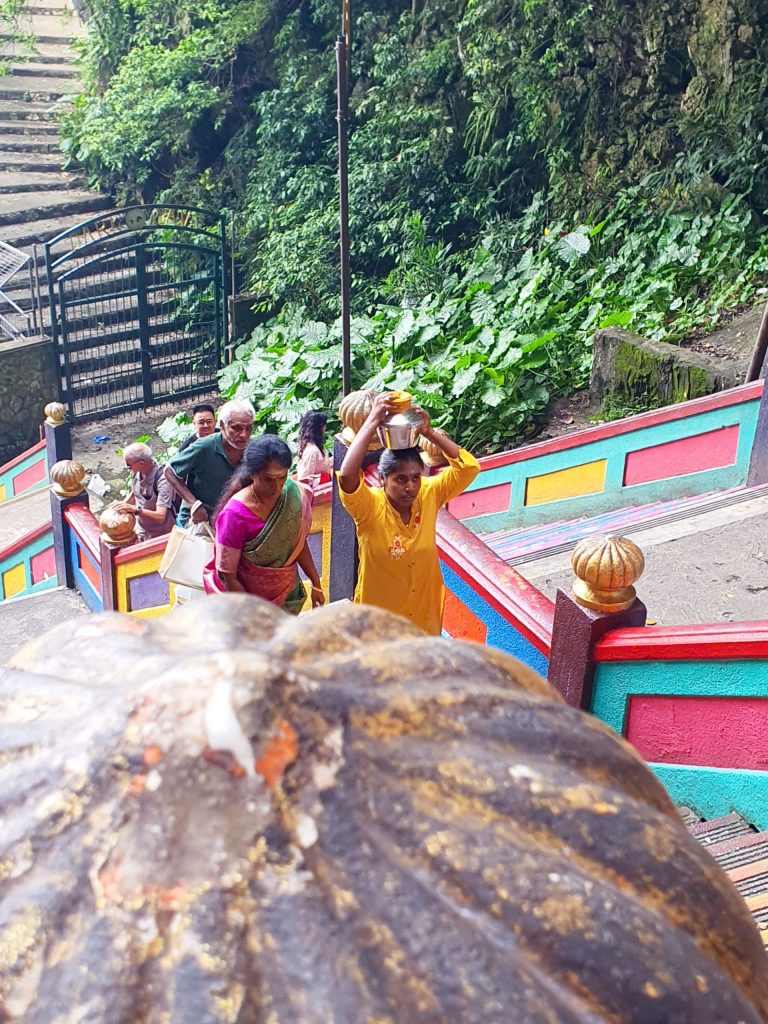
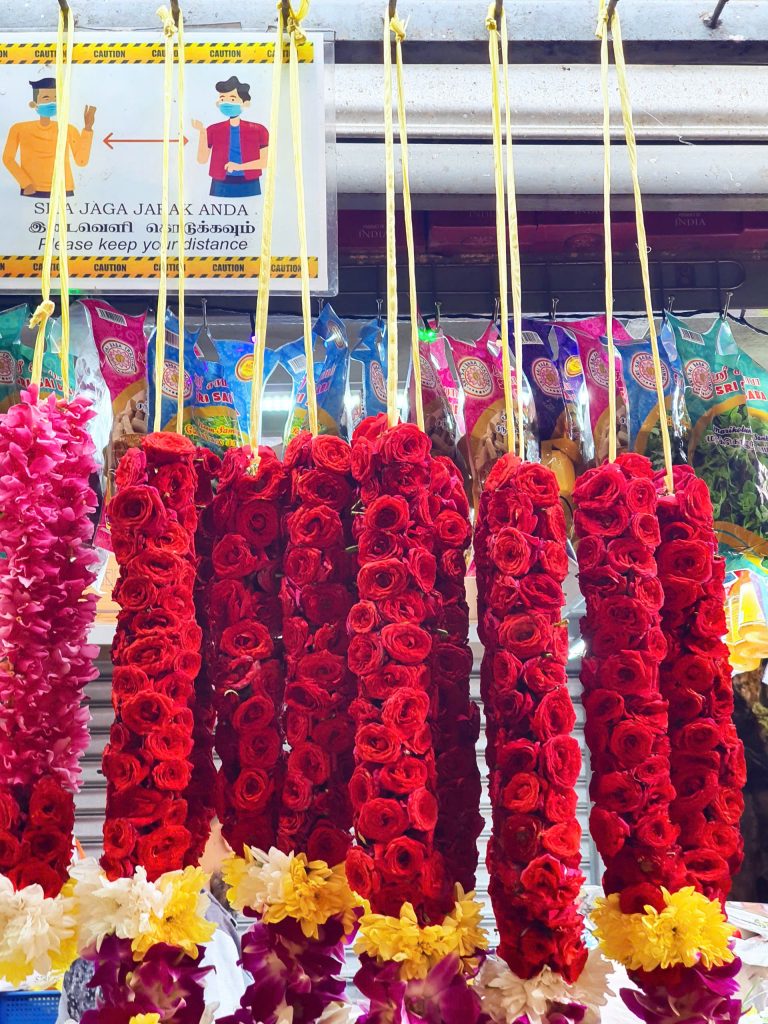
Back to center city from Batu Caves about 11 o’clock, we went back to lunch and coffee at Canokopi, the food and drinks were very delicious. I have lunch here for 2 days.
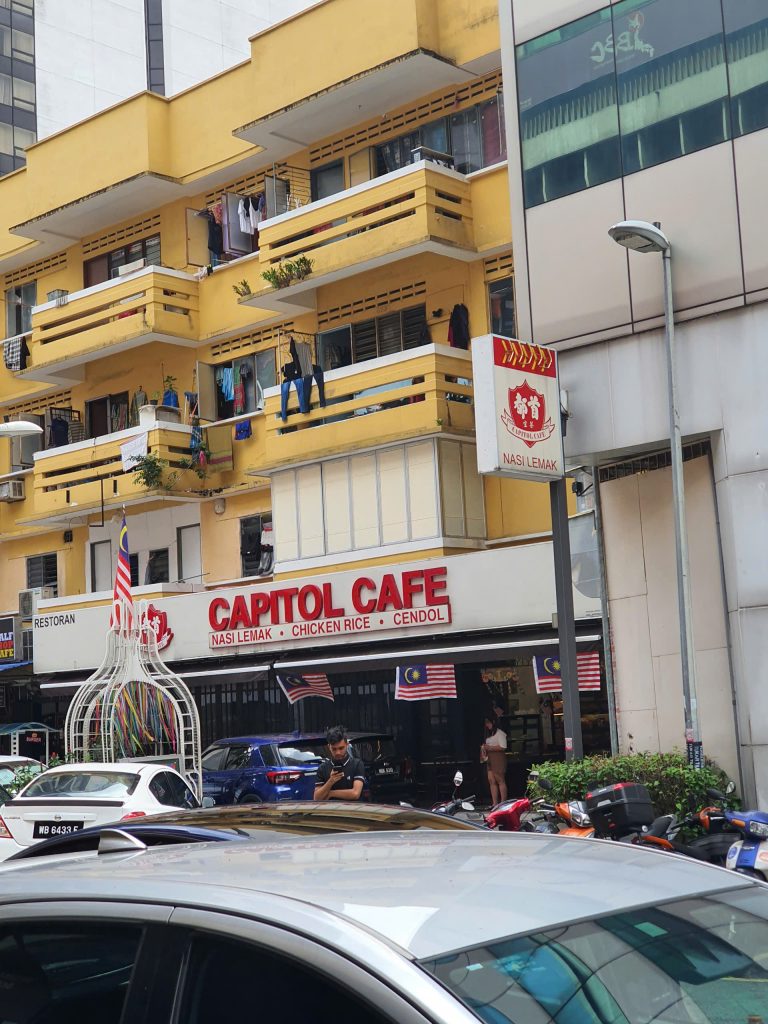
After finishing lunch, walk along the small alley to go back to the hotel, wandering around these areas, there are many snacks and street foods sold in the style of local people.
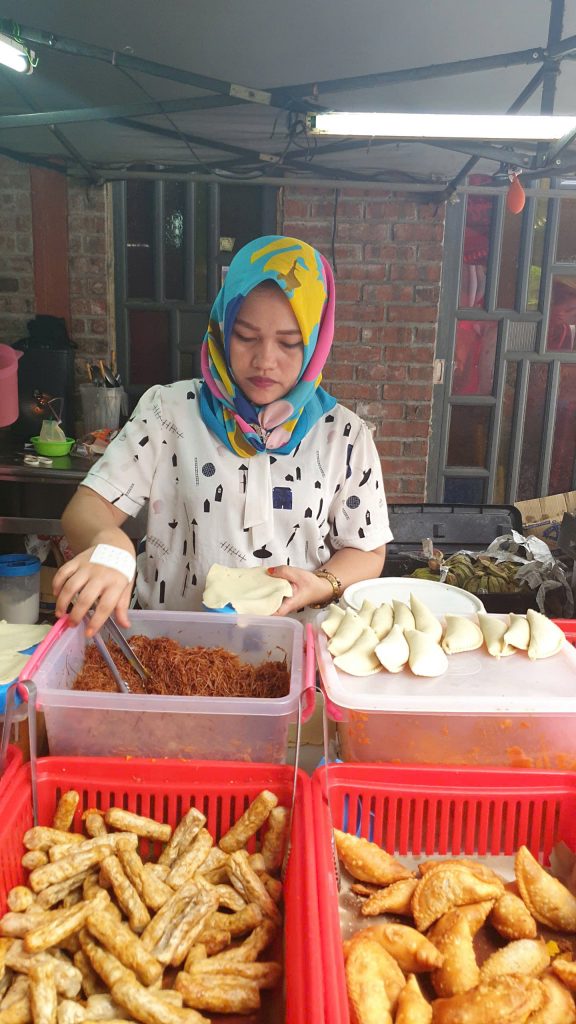
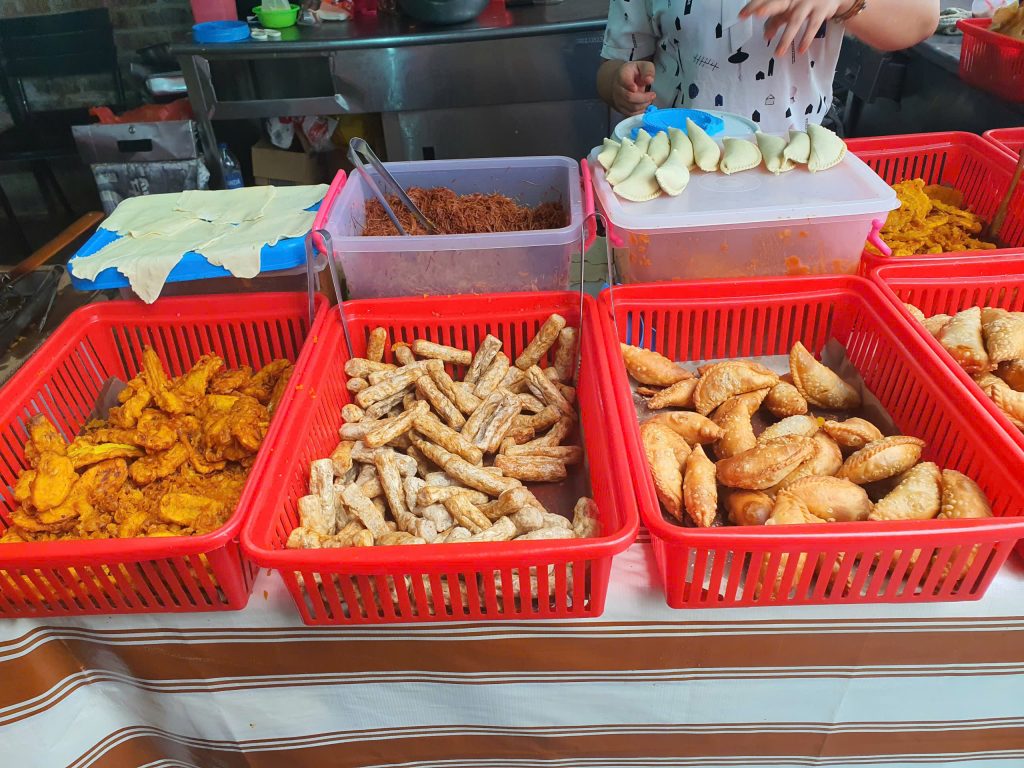
- After a little rest at the hotel to escape the heat, around 4 PM is the perfect time to head out on foot to the Street Art alley near Bukit Bintang. This colorful spot is tucked right behind the famous Jalan Alor food street. The area is a hidden gem for photo lovers — the murals really pop in the late afternoon light, and it’s usually pretty quiet at that time, so you can explore and snap pictures at your own pace. Once you’ve wandered through the vibrant artwork and soaked in the creative vibe, you can swing by the nearby market for a refreshing coconut drink or grab a light snack to recharge. It’s a laid-back, fun way to experience a different side of the city.
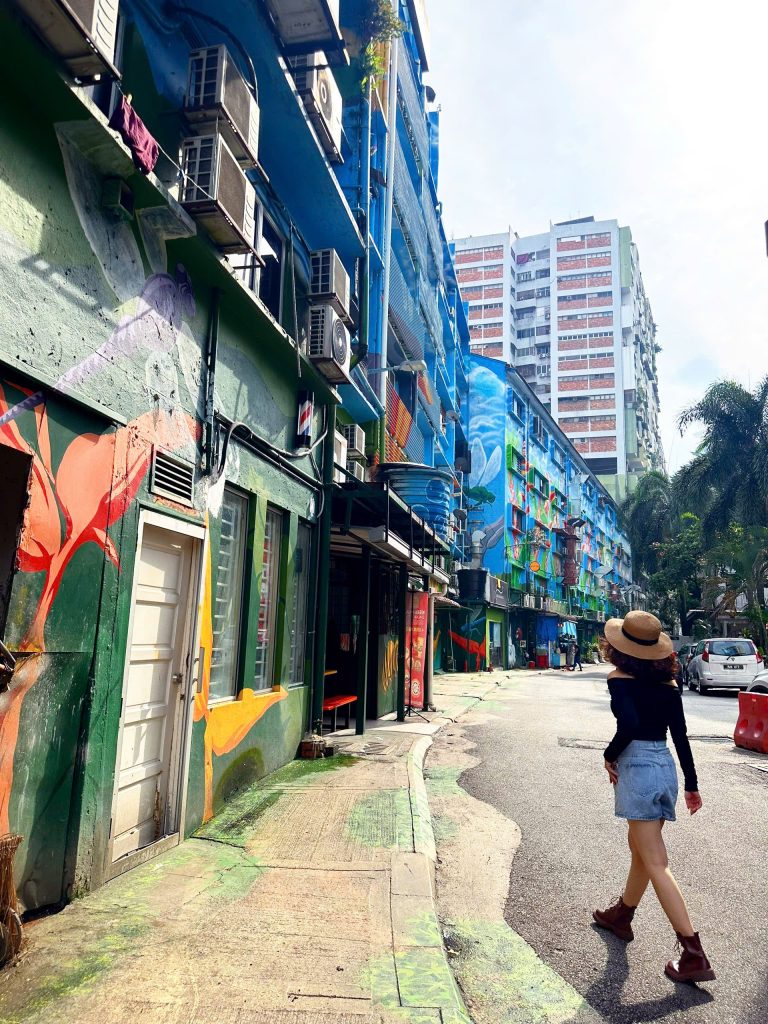
Jalan Alor Street Art: A Vibrant Mural Wonderland in Kuala Lumpur
Once a rundown back alley plagued by drug issues and urban decay, Jalan Alor has undergone a stunning transformation. What was once seen as an eyesore is now bursting with color and creativity, drawing visitors from around the world. The vibrant murals have turned this once-forgotten lane into a unique open-air art gallery.


The street art here is incredibly diverse, showcasing a wide range of styles and themes — from abstract designs and vivid portraits to stories of local culture and powerful messages about environmental conservation. Every mural tells its own story, reflecting the talent and imagination of the artists behind them.
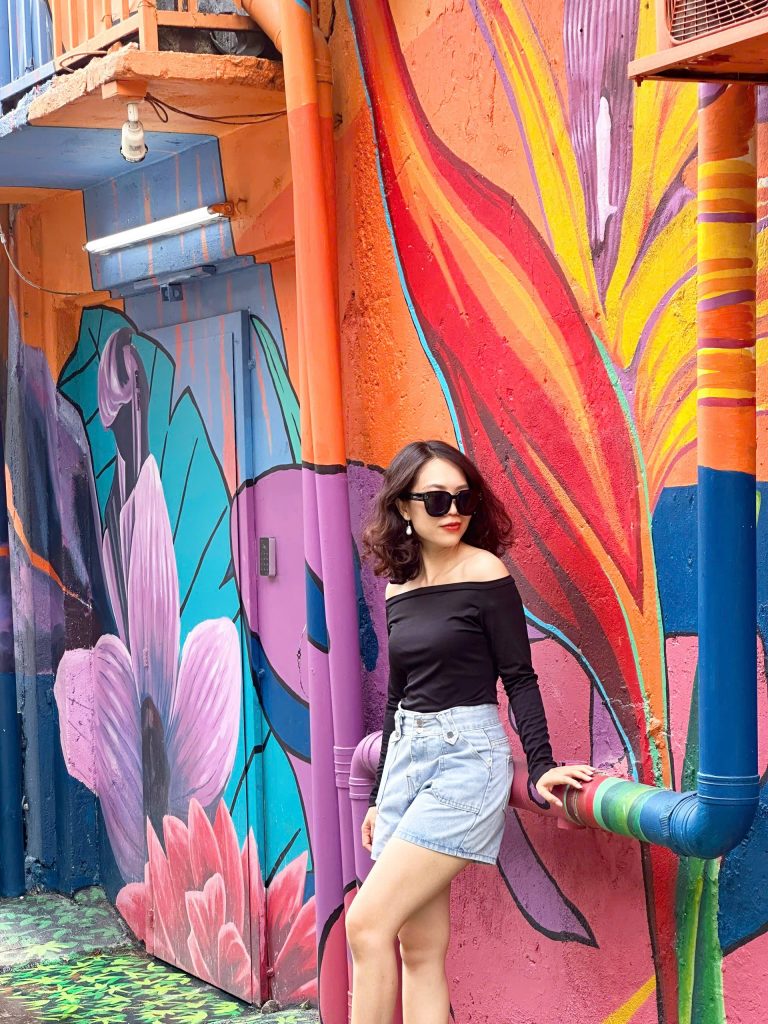
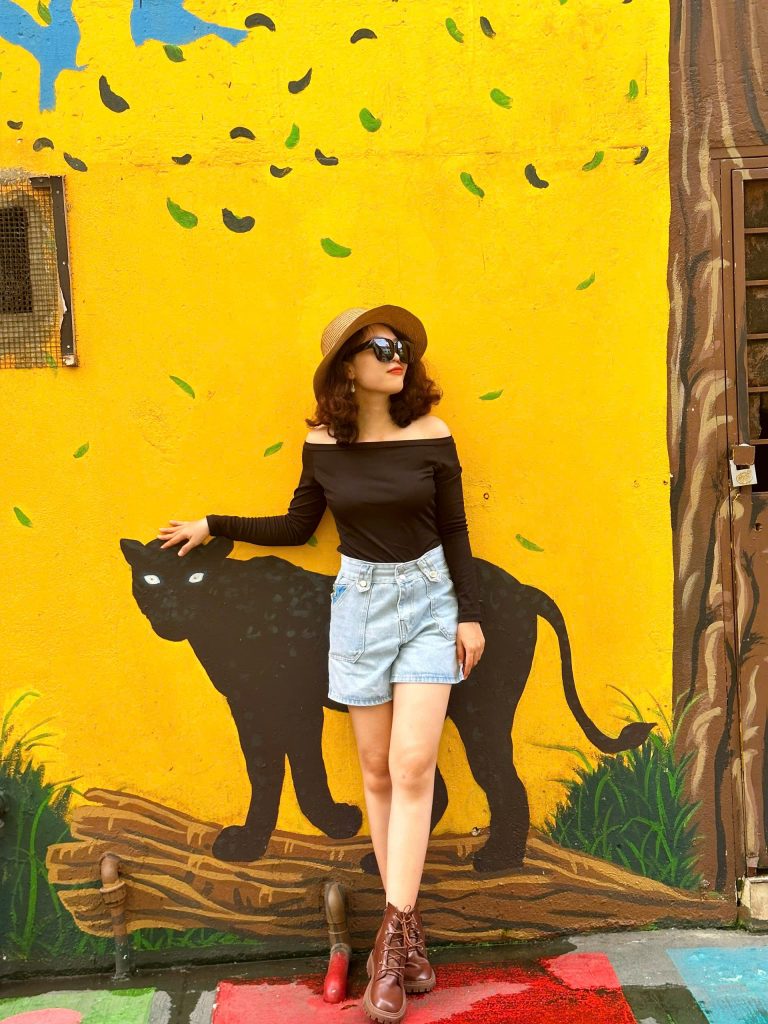
As you wander through these streets, a whole world of art quietly unfolds before your eyes. Stunning murals seem to whisper their own stories, breathing new life into the old, weathered walls of cafés, restaurants, and timeworn houses. Each surface is now a canvas, wrapped in layers of color and inspiration.
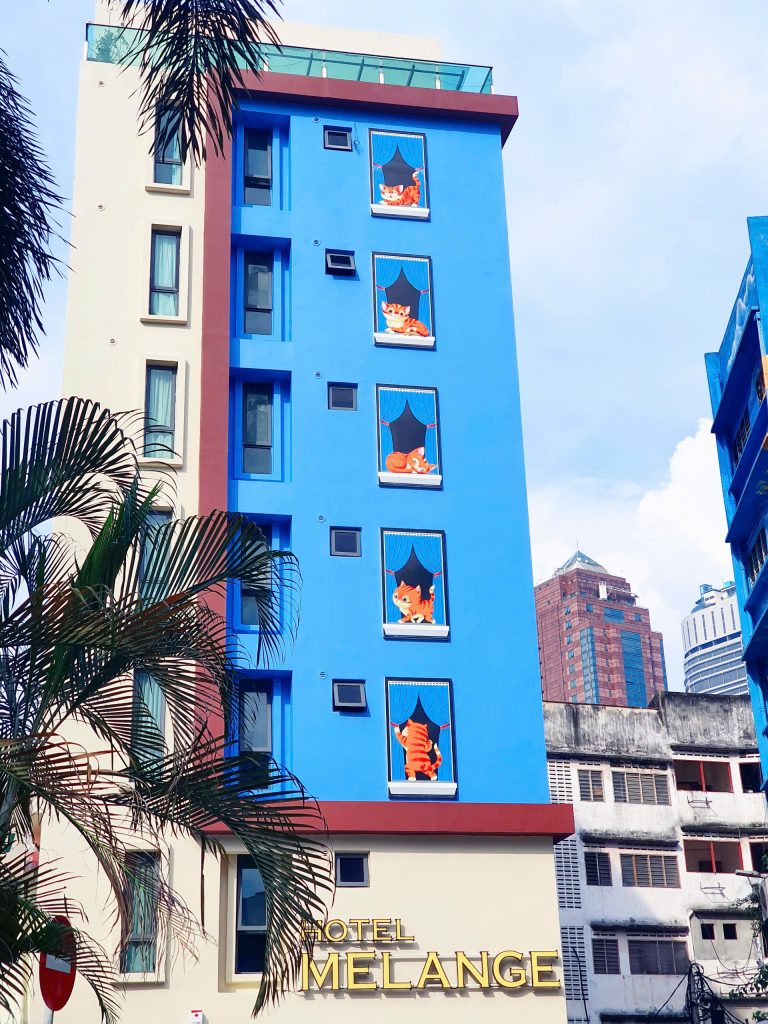
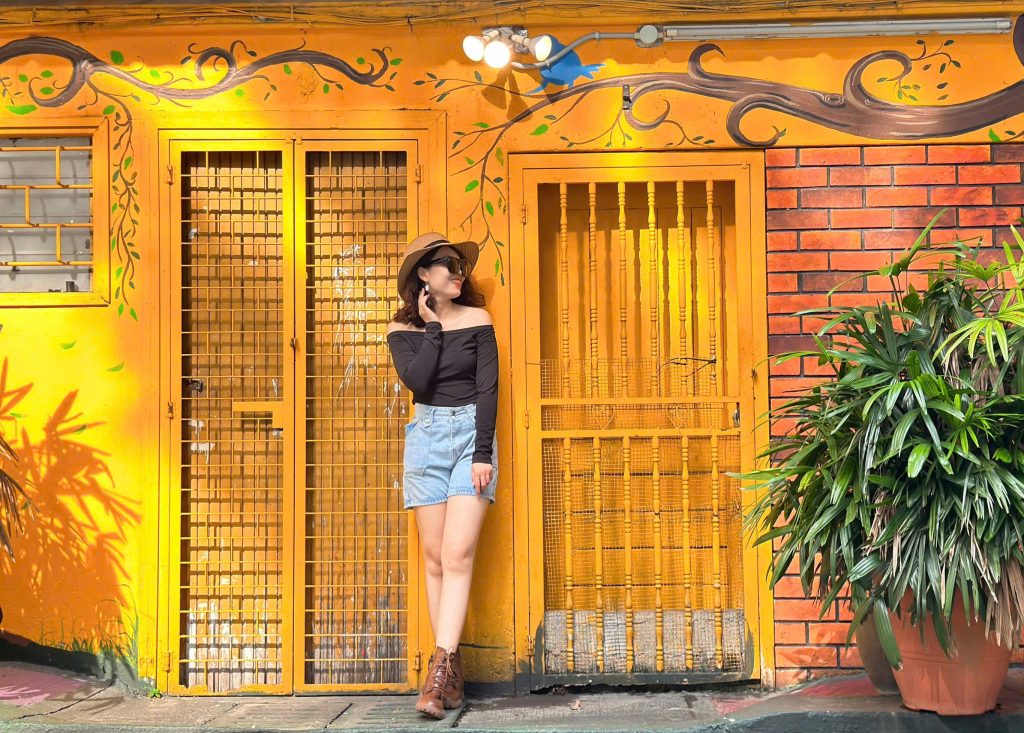
Every corner feels like a silent scene from a film — inviting you to pause, take it in, and capture those dreamy travel moments that stay with you long after the journey ends.

- Around 5 PM, as the weather cools and the golden hour begins, hop in a Grab and head over to Merdeka Square. It’s the perfect spot for a leisurely stroll, some golden-lit photos, and a peaceful sunset to close the day with a touch of magic.
Independence square Merdeka
Right in the heart of Kuala Lumpur, nestled beside the historic Jamek Mosque and just inland from the meeting point of the Gombak and Klang Rivers, lies Merdeka Square — a place rich with national pride and historical significance.
It was here, on August 31, 1957, that Malaysia’s first Prime Minister, Tunku Abdul Rahman, stood before a crowd and lowered the British flag to declare the nation’s independence. In honor of that moment, the square was officially renamed Dataran Merdeka (Independence Square) in 1989.
Today, Merdeka Square is more than just a historic site — it’s part of a vibrant complex that includes a massive underground parking facility and shopping area. Despite its modern updates, it remains a powerful symbol of freedom and national unity.
Every year, this square becomes the focal point of Malaysia’s National Day celebrations, hosting grand parades, cultural performances, and live concerts. Whether you’re drawn by its striking colonial-era architecture, its iconic flagpole (one of the tallest in the world), or its deep-rooted history, Merdeka Square is a must-visit when exploring Kuala Lumpur.
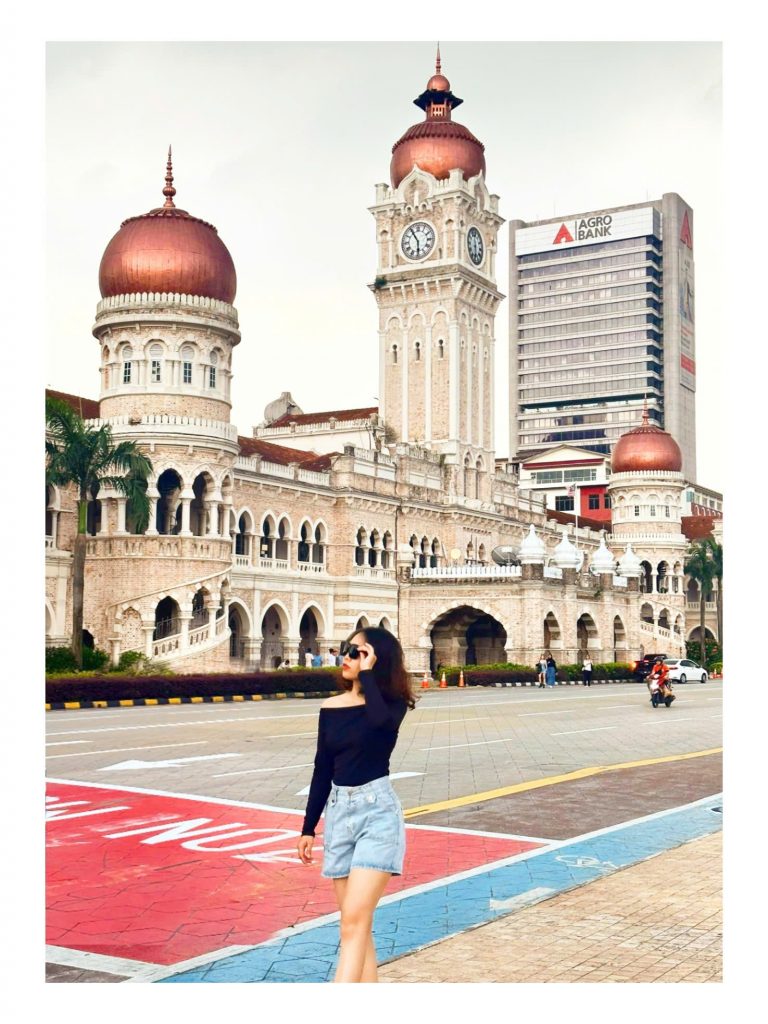
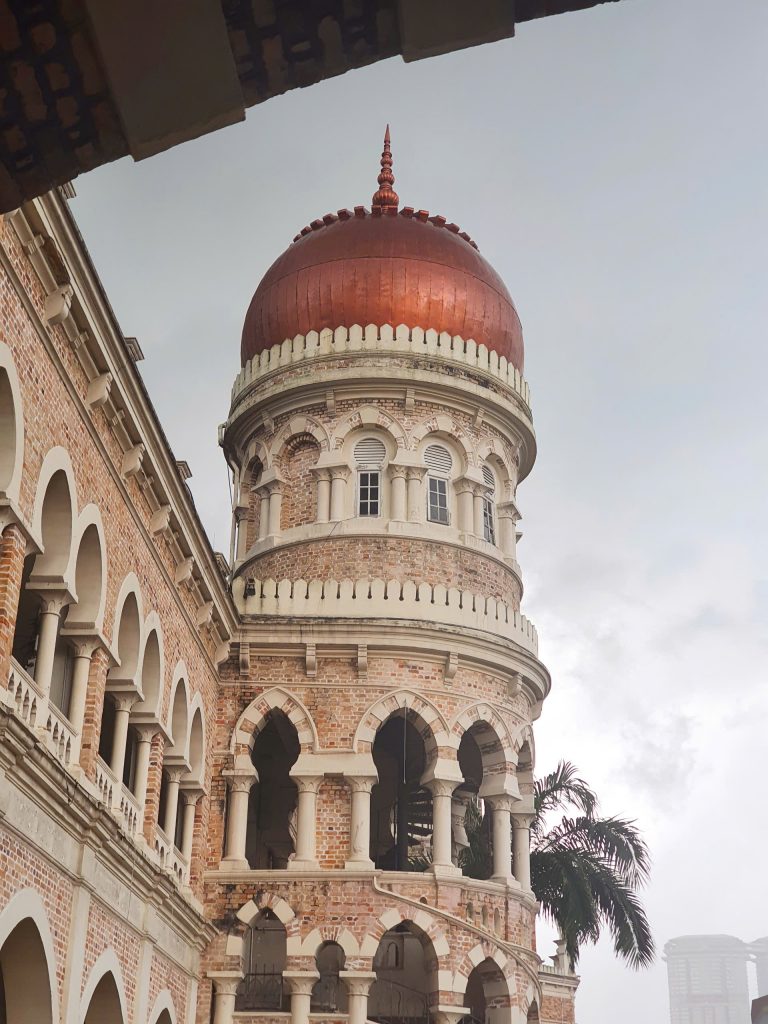
For me, the most striking landmark around Merdeka Square is undoubtedly the Sultan Abdul Samad Building. Located on the eastern side of the square, this architectural gem stands as a proud symbol of Malaysia, showcasing a rich Moorish-inspired design with a majestic 41-meter clock tower and elegant domes.
Designed by British architect Arthur C. Norman, the building stands out with its eye-catching red-and-white brick façade and its series of graceful arched colonnades, giving it a timeless, almost regal presence.
Today, the Sultan Abdul Samad Building houses the Ministry of Communications and Multimedia Malaysia, serving not only as a functional government space but also as a cultural and historical icon. It continues to play a significant role during national political and cultural events, while preserving the legacy of Malaysia’s colonial past.

It’s best to visit this area early in the morning or late in the afternoon, when the crowds have thinned out and you can truly enjoy the spacious, open atmosphere in peace. Just a little tip — there aren’t many food stalls or cafés around the square, so be sure to pack some water and a few light snacks to keep your energy up as you explore.
Kuala Lumpur’s weather can be quite moody — bright sunshine can quickly give way to sudden downpours. So don’t forget to bring a compact umbrella or a lightweight raincoat, just in case.
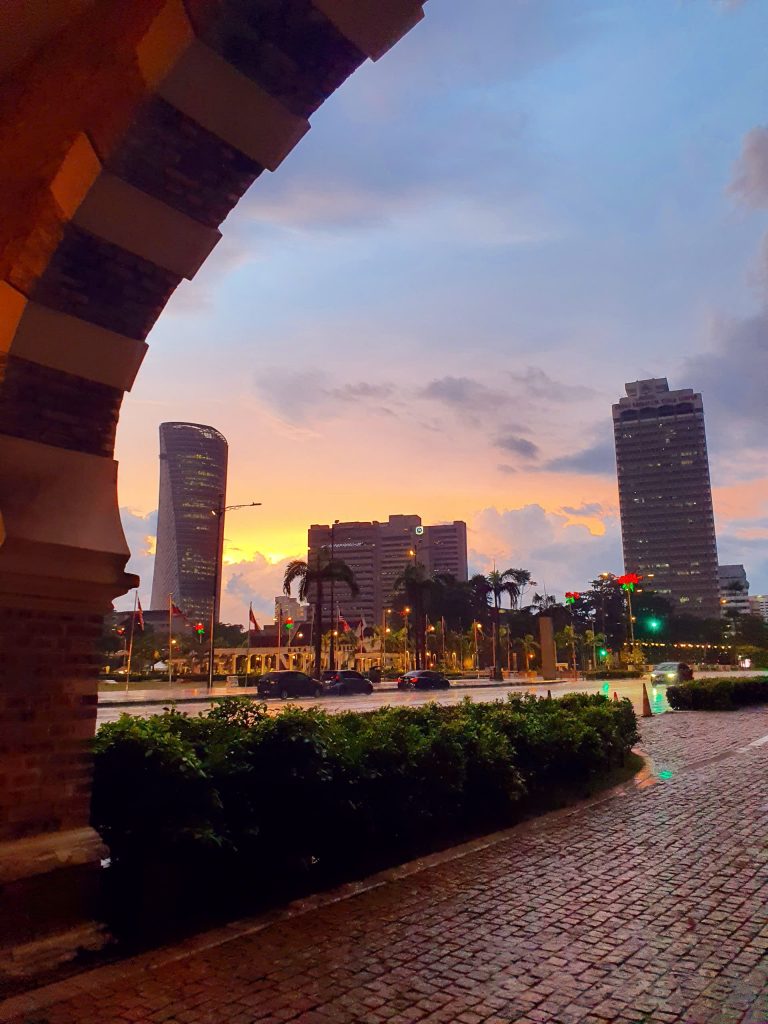
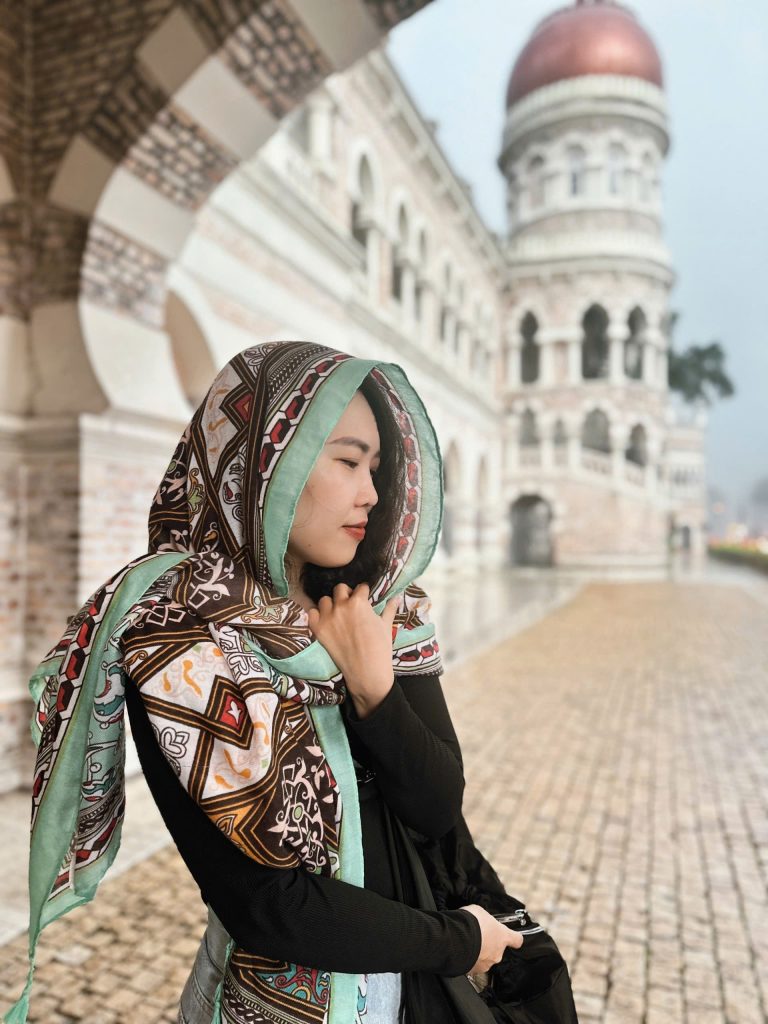
One of my most memorable experiences happened right here. Just as I was about to leave, the sky darkened and a heavy storm rolled in — thunder cracked overhead, and rain poured down for nearly three hours. With no shops or shelters nearby, I ended up squatting on the sidewalk with a few locals, huddling together to stay dry and chatting as we waited for the storm to pass. It was a soaking-wet moment, but strangely comforting — a little “rainy-day memory” that warmed my heart in the middle of a Kuala Lumpur storm.
After a long day of wandering and discovery, our group was ready for a break. We found a cozy hotpot restaurant near the hotel — the perfect way to wind down. The steaming meal was comforting, almost like a warm hug after a day on our feet. With bellies full and spirits recharged, we each headed back to our rooms, letting sleep take over, ready to greet tomorrow’s adventures.
##Day 3: Temple Thean Hou – shopping center Eslite Spectrum – Pavilon
Learning from the packed schedule of the previous day, we gave ourselves a little extra rest. After a deep and refreshing sleep, we started Day 3 a bit later — around 9 AM — feeling recharged and ready for another day of exploring. Our first stop of the day: a Grab ride to the beautiful Thean Hou Temple.
Thean Hou Temple
📍 Address: 65, Persiaran Endah, Taman Persiaran Desa, 50460 Kuala Lumpur, Wilayah Persekutuan Kuala Lumpur, Malaysia
🕗 Opening Hours: 8:00 AM – 10:00 PM
Rising gracefully atop a hill, Thean Hou Temple is one of the oldest and most magnificent temples in Kuala Lumpur. Dedicated to Mazu, the Chinese sea goddess, the temple beautifully blends traditional architectural elements with modern design. From the intricate carvings and vibrant red pillars to the panoramic views of the city skyline, every corner here invites reflection, photos, and a peaceful pause in your journey.

Perched peacefully atop Robson Hill, in the heart of Kuala Lumpur’s bustling Chinatown, Thean Hou Temple stands as one of the most revered spiritual landmarks in the city. Spanning an impressive 6,760 square meters, it holds the title of the largest temple dedicated to the sea goddess Mazu in Southeast Asia. More than just a place of worship, the temple is a cultural treasure brought to life by the Chinese community — particularly the Hainanese — who carried their traditions with them when they settled in Malaysia.
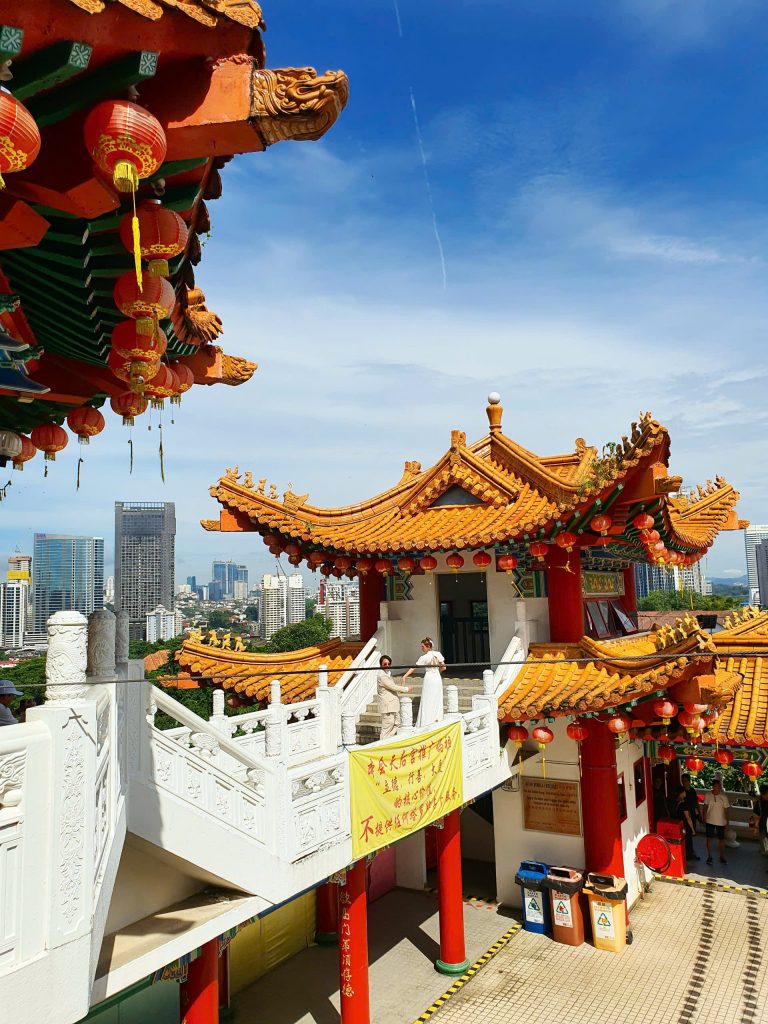
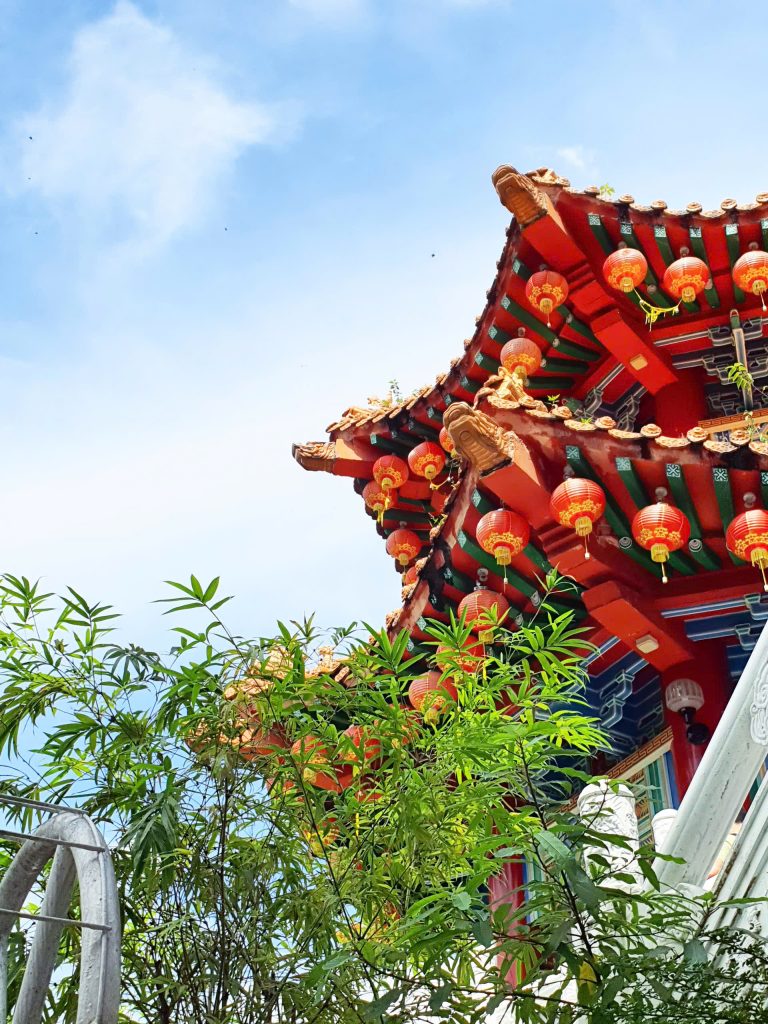
As you enter the temple grounds, you’re immediately struck by the sweeping traditional Chinese architecture that graces every corner of the complex. From the gracefully curved rooftops to the timeworn yin-yang tiles, the temple emanates an aura of both grandeur and serenity. Stepping inside feels like stepping back in time — a journey into the spiritual heritage that continues to live on through generations.
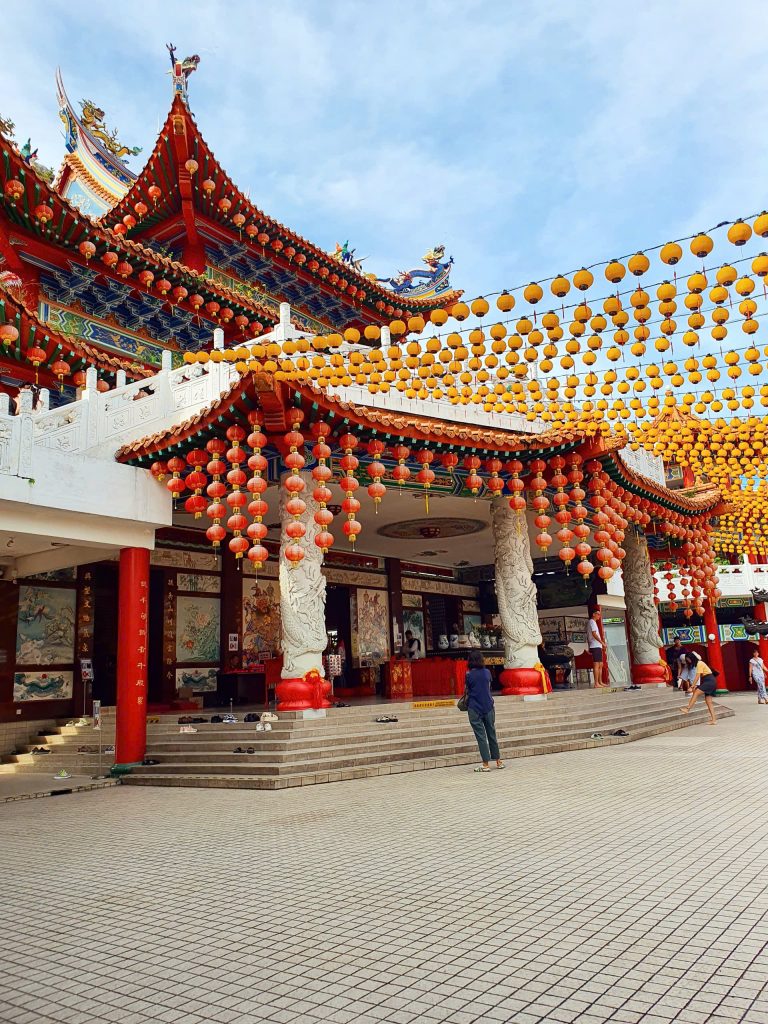
What truly sets Thean Hou Temple apart is its harmonious blend of three philosophies — Buddhism, Taoism, and Confucianism. Every intricate detail, no matter how small, plays a role in shaping this stunning masterpiece — a delicate balance of ancient wisdom and modern construction techniques.
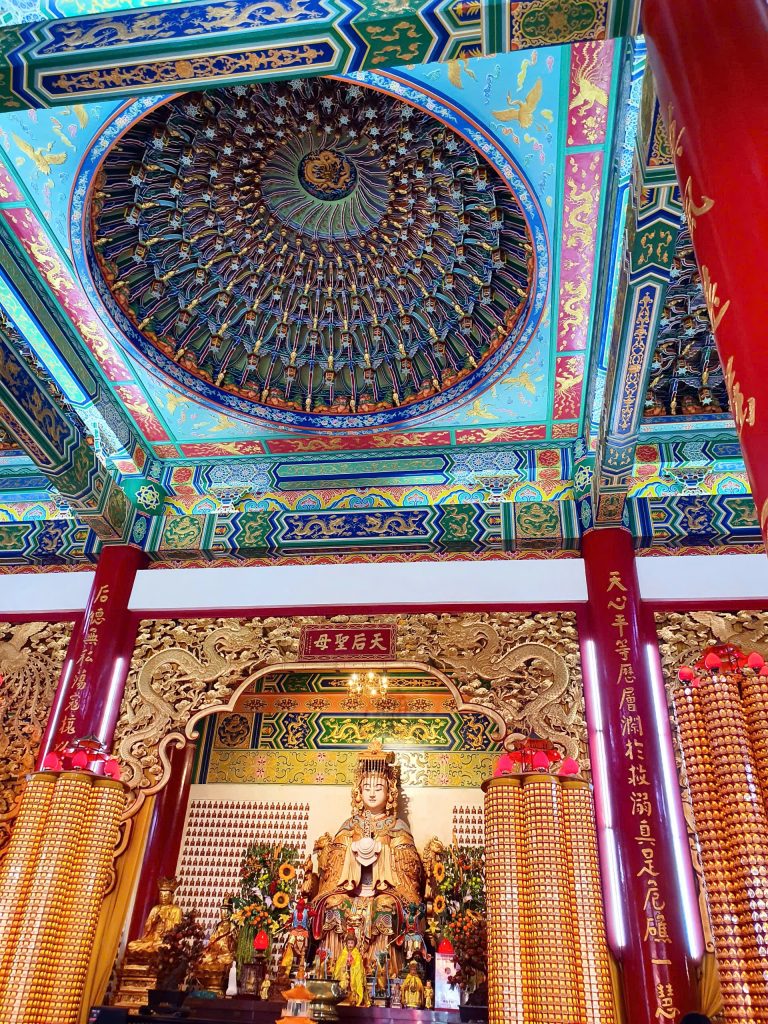
Even before entering the main halls, you’re greeted by a breathtaking multi-arched entrance gate, supported by vivid red columns — a color deeply rooted in East Asian culture, symbolizing prosperity, joy, and good fortune. It’s a space that invites both reflection and awe, perfect for travelers seeking not just beautiful views, but a deeper connection to Malaysia’s cultural mosaic.

The temple complex is thoughtfully laid out across multiple levels, with each floor serving a distinct purpose — blending daily life, community, and spirituality in a beautifully seamless way:
- Ground Floor (Level 1): This is where your visit begins. You’ll find a row of colorful souvenir stalls offering everything from charms to incense, and a vegetarian café where you can enjoy light, wholesome dishes in a calm and serene setting — a perfect place to rest your feet and soak in the peaceful energy.
- Level 2: Home to a multi-purpose hall, this space regularly hosts traditional Chinese wedding ceremonies, keeping alive age-old customs within the modern Malaysian-Chinese community.
- Level 3: Here you’ll find the administrative offices, dedicated to organizing wedding registrations and cultural events, acting as a bridge between sacred traditions and everyday community life.
- Level 4: The heart of the temple — its most sacred prayer hall. Bathed in the soft glow of lanterns and the gentle haze of incense, this is where daily worship takes place. The atmosphere is reverent and still, inviting quiet reflection and a sense of spiritual connection.
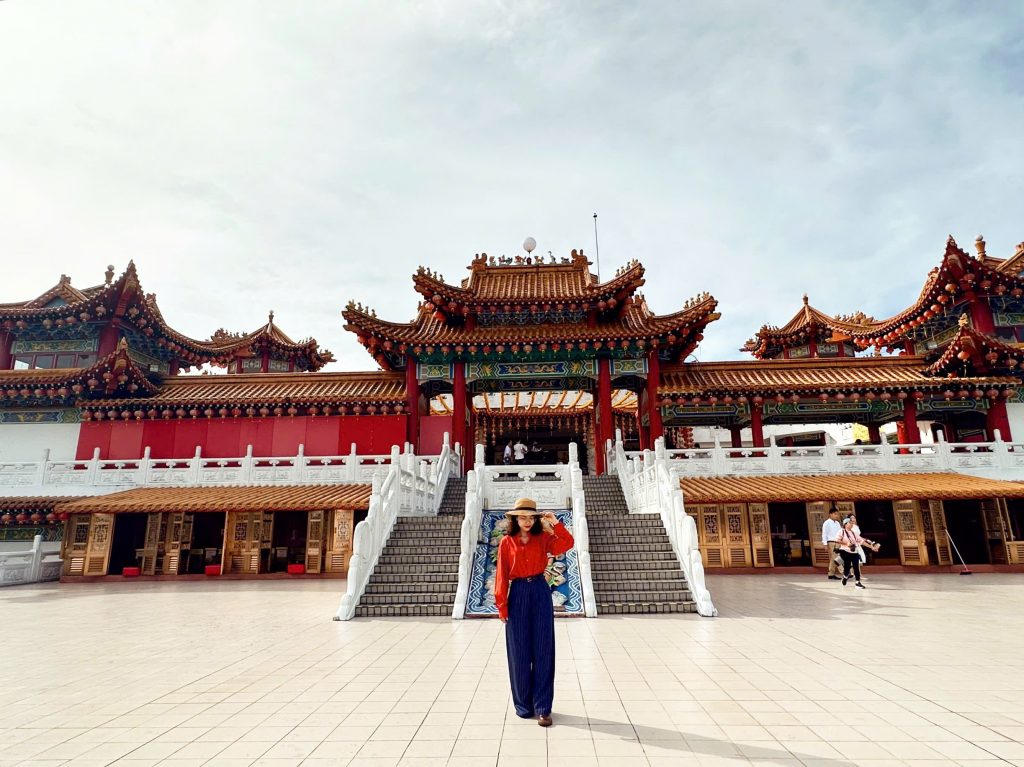
Even though Thean Hou Temple is decorated with many bright colors, the overall design focuses on red and gold — colors that symbolize prosperity and good luck in Chinese culture. These colors are seen in everything from the curved roof tiles to the strong columns and beams that support the temple.
There are also some beautifully carved details, like reliefs along the pathways and decorative trim under the roof, adding extra highlights and emphasizing the temple’s elegant craftsmanship.
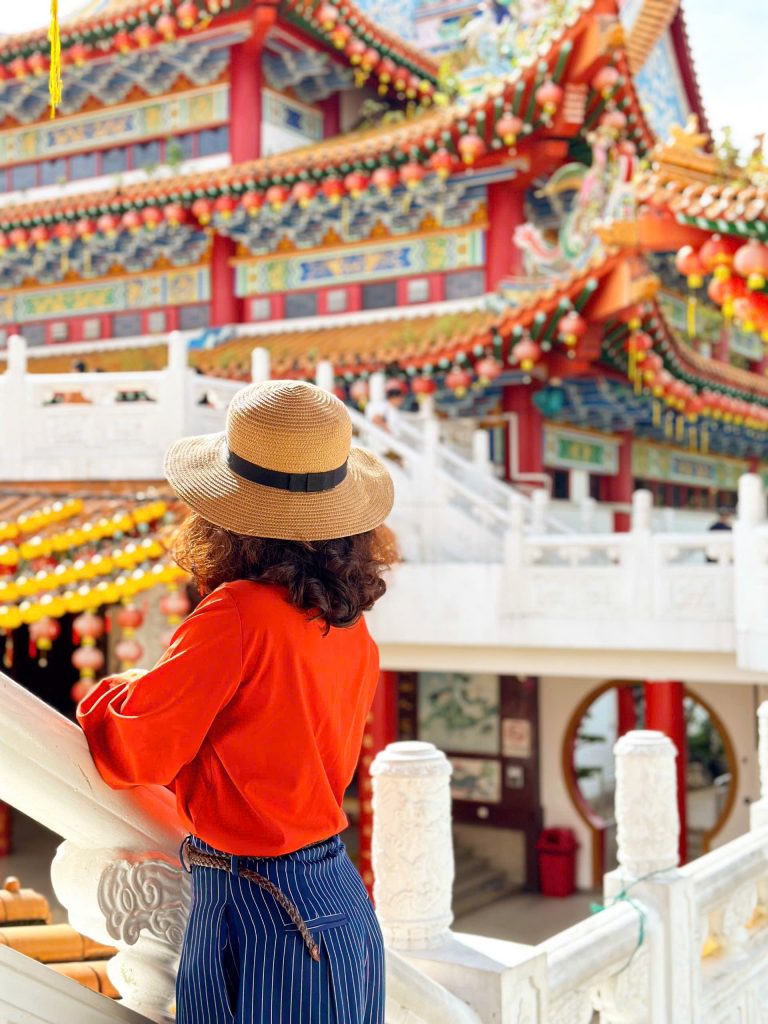
What truly makes Thean Hou Temple stand out is the hundreds, even thousands, of red lanterns that hang throughout the grounds. As night falls, each lantern is lit, filling the space with a warm, enchanting red glow. From the 4th floor, the view is nothing short of magical — it’s like a sea of stars glowing in the night, both mesmerizing and breathtaking.

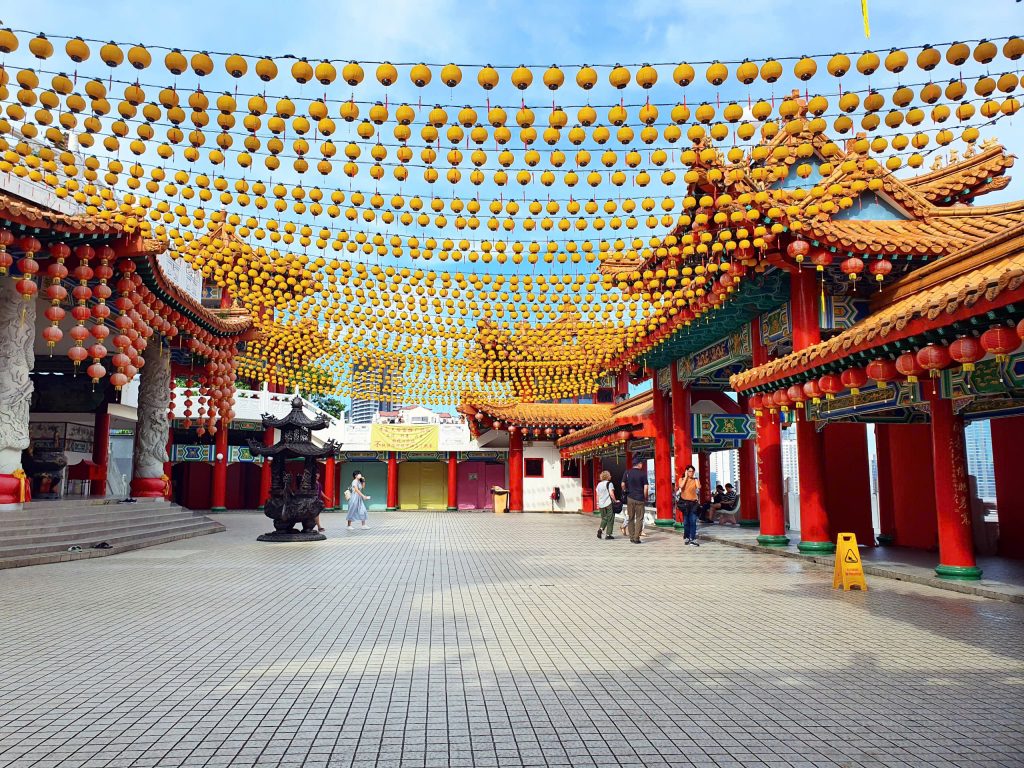
Every step at Thean Hou Temple feels like traveling back in time, allowing you to touch the deep cultural beauty and lasting spiritual essence of the local community.
By 12:30 PM, our group left the temple and headed to Canokopi for a delicious lunch, followed by a much-needed rest at the hotel. After a morning spent exploring under the blazing sun, we were all a bit tired, craving a short nap to recharge for the rest of the day.
Around 4 PM, I met up with a friend at Cộng Cà Phê (Cộng coffeeshop), nestled inside the Eslite Spectrum Mall. The café’s peaceful, rustic atmosphere was the perfect escape after hours of strolling in the heat — a calm, cozy spot to unwind and enjoy some quality time.
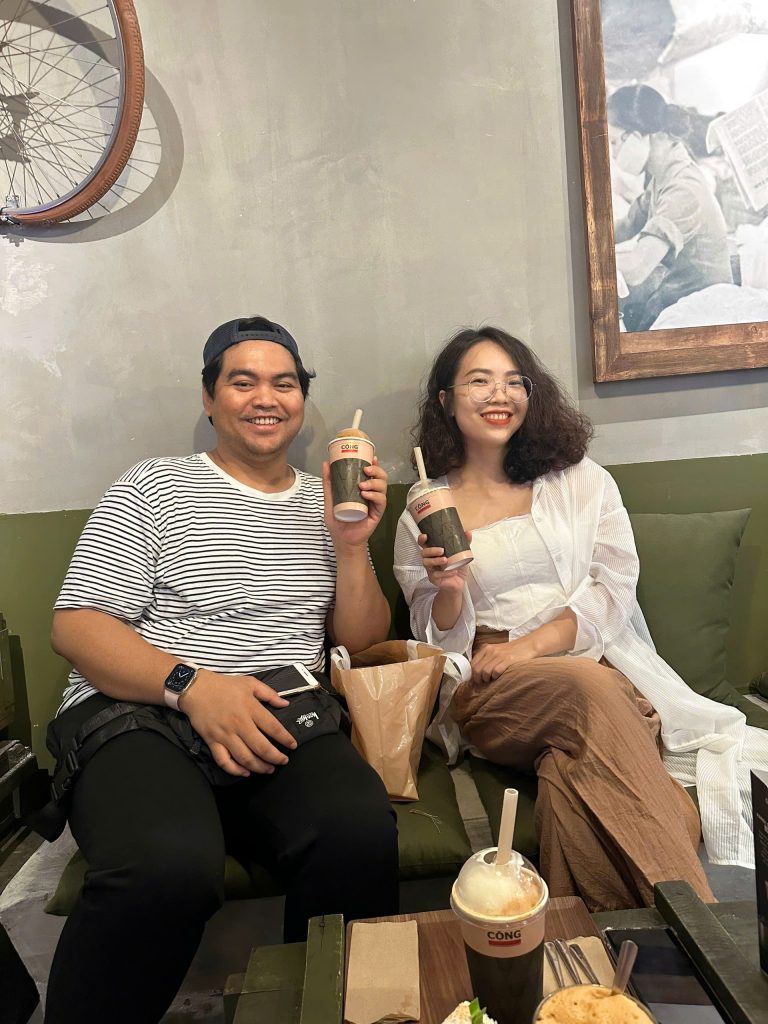
- That afternoon and evening, my friend took me on a shopping spree at Pavilion — a massive, stunning shopping mall filled with countless delicious and diverse dining options. The place felt like a grander, more dazzling version of Vincom (Vietnam), but with an entirely different charm. The shopping center was bustling with people, and since it was nearing the end of the year, the mall had already begun decking out for Christmas. The lights sparkled everywhere, creating a lively yet cozy atmosphere, filled with both excitement and a rich cultural vibe.
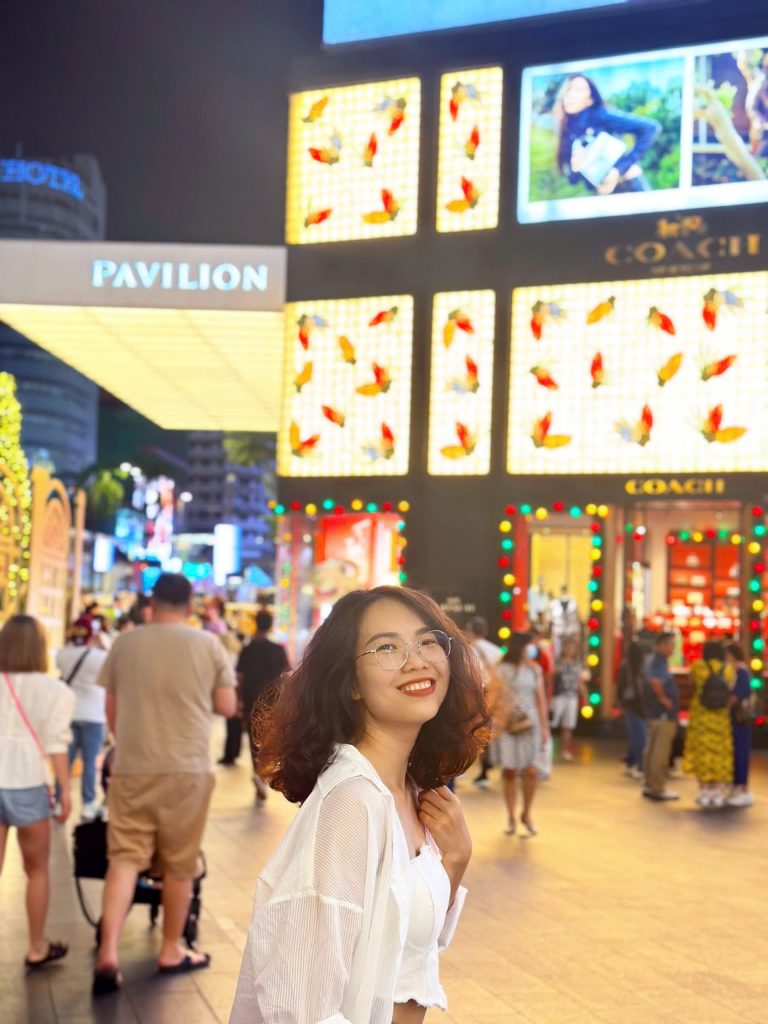

As the evening came to a close, Kame decided to have dinner right in the mall, trying a few local Malaysian specialties that my friend recommended — the flavors were a perfect mix of familiar and new, both comforting and exciting. I also took the opportunity to stop by the supermarket to pick up some late-night snacks and a few small souvenirs to bring home.
And so, Day 3 in Kuala Lumpur came to an end — a day filled with delightful flavors, vibrant colors, and little moments of joy that made the journey unforgettable.
##Day 4: Kuala Lumpur-Hochiminh city:
That morning, we all woke up at 8 AM, leisurely walked to the nearby Chinatown area — just a few blocks from the hotel — to find breakfast. The small, bustling eateries full of locals created a lively atmosphere that made it feel as though we had stepped into the streets of Hong Kong. Sitting down with a steaming bowl of noodles, listening to the soft hum of Cantonese music in the cozy space, I couldn’t help but feel that time slowed down. Everything felt so familiar, so peaceful — a perfect way to end our time in Kuala Lumpur

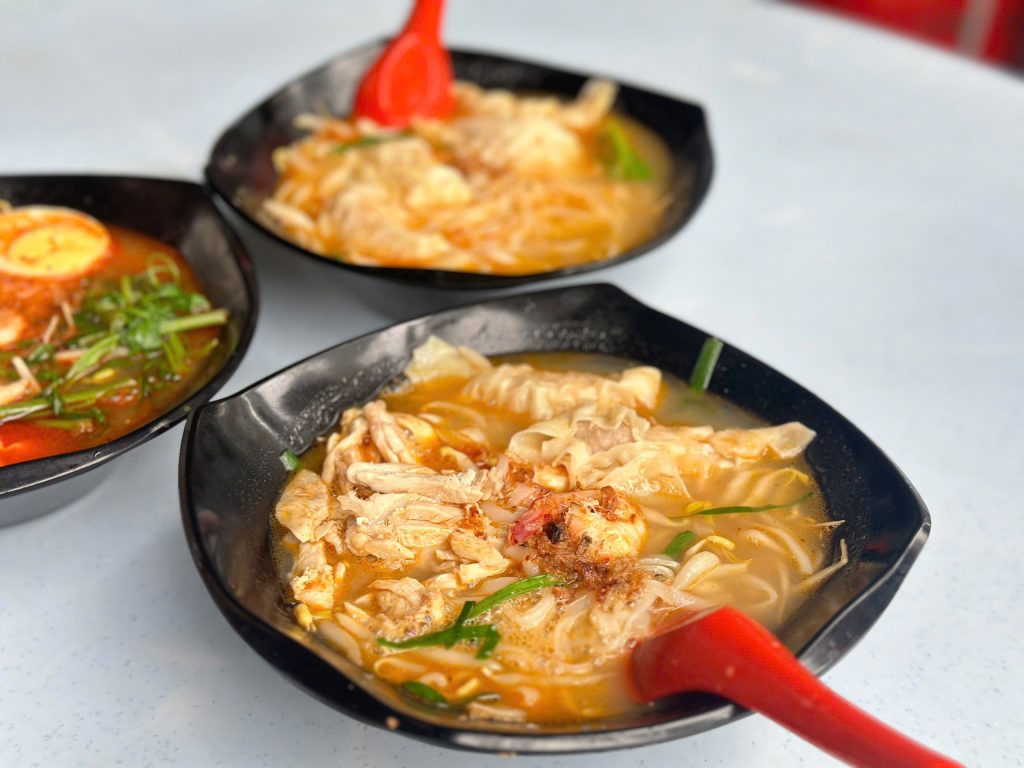
Since our flight back to Vietnam was at 2PM, we checked out of the hotel at 11AM and called a Grab to head straight to the airport.
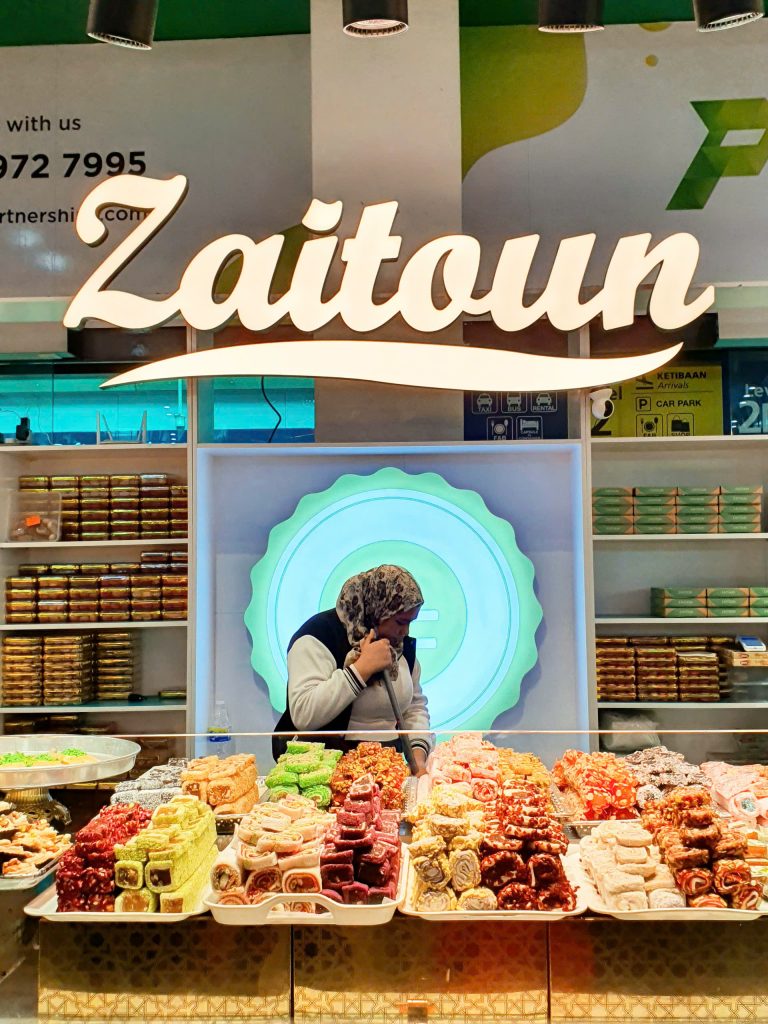

Pro Tip: If you haven’t had time to buy souvenirs yet, don’t worry — Kuala Lumpur Airport has plenty of local specialties, from chocolates to souvenirs, all reasonably priced. It’s a perfect spot for last-minute shopping.
A few notes:
- Kuala Lumpur is in the GMT+8 time zone, so it’s 1 hour ahead of Vietnam.
- The local currency is the Ringgit, and 1 Ringgit (RM) = 5,750 VND (subject to exchange rates).
- In Kuala Lumpur, most people get around by Grab, and the prices here are actually much cheaper than in Vietnam. Just be mindful of rush hours — typically from 9 AM to 10 AM and 6 PM to 7 PM, when traffic can get really heavy.
- If you’re flying with AirAsia, there are hand luggage scales right by the entrance to customs. If your bag exceeds 7 kg, you’ll be asked to return to the counter to check in your luggage. There’s no way around this, so make sure to pack light!
And just like that, our Kuala Lumpur adventure comes to a close.
Goodbye, KL! Looking forward to visiting Malaysia, Penang, and Borneo on future trips — destinations still calling out to be explored…
Goodbye KL, see Malaysia, Penang, Borneo in the next trip — the land are still beckons…
